We left the ‘fancy’ replacement ryokan (actually it was just a big and expensive hotel) receiving many bows from the hotel staff and a large bag of presents from the hotel including a box of very tasty thin, sweet rice treats that we are still enjoying back home on San Juan Island. We followed our Google Maps using our trusty guide, Tenn, along some streets and alleys and through a big parking lot arriving at the Takayama Station in time for the train to Nagoya.
The bullet trains, powered by over-track electricity, are something to behold. They slink quietly into the station with their prominent pointy noses about 3 minutes before they are scheduled to depart. They stop their 15-20 car selves exactly where the numbered signs on the station floor and wall say they should, the doors open and people come out, others come in and the doors close on the minute of scheduled departure and off the white, snakelike device scoots. Most of the cars have exclusively reserved seats, so there is no need to rush or elbow (both very non-Japanese activities).
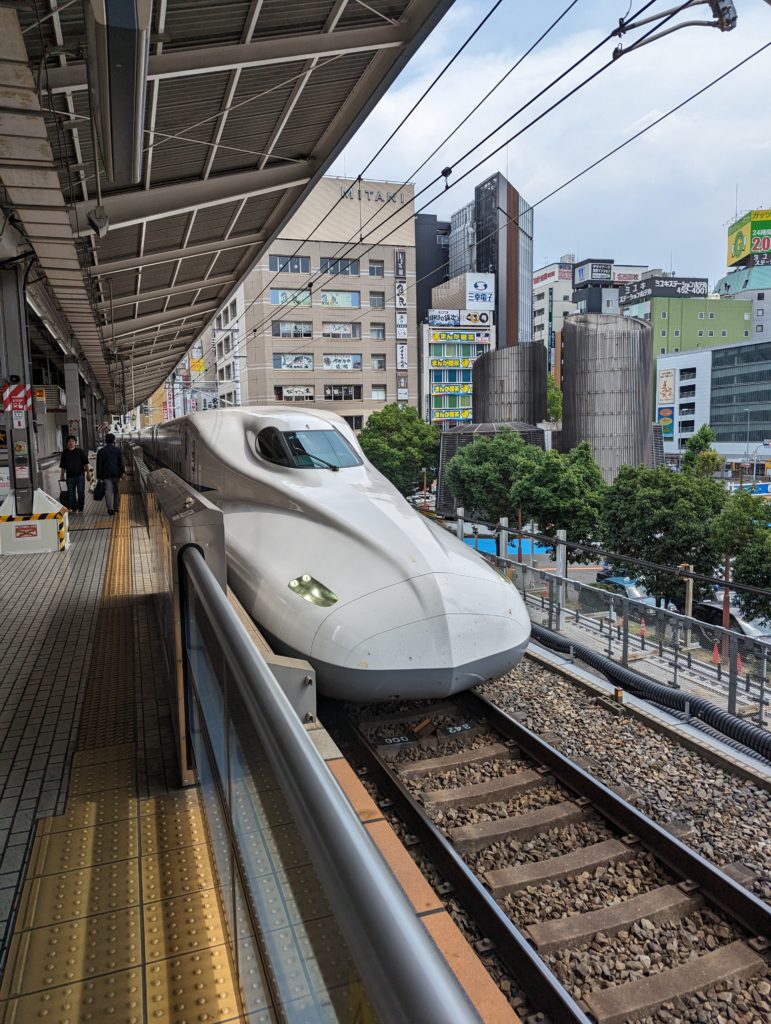
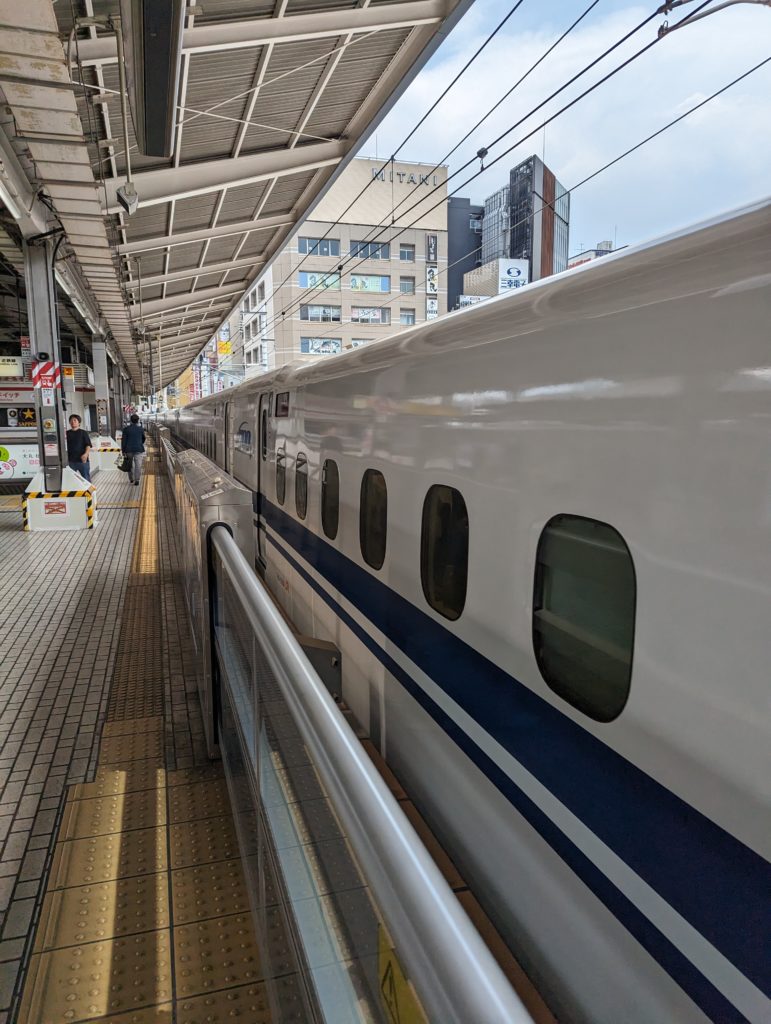
From Nagoya, a bullet train brought us to the cultural center of Kyoto, a city of countless temples and ancient places, that was the political center of Japan from about 800 CE up until the end of the Shogun Period in the mid-nineteenth century.
One of Tenn’s goals for this ‘becoming a teenager’ trip was to experience and experiment with Japanese cuisine. On our first night in Kyoto, we had a terrific guide, Hideyo, take us on a back-alley small-bites food tour. She had made arrangements with three tiny restaurants for us to sample hidden food treasures in Kyoto.
Tenn rose to this challenge like a fish to a lure. Here is an example:
To catch the flavor of our travel, here is what transpired on one L–O–N–G but fun and educational day:
We left our downtown hotel and took busses to the western edge of Kyoto to walk with many Japanese people in a dense bamboo forest which has been cut through by walking trails. The Arashiyama Bamboo Grove would probably seem like a magical place if we had gotten up with the sun, but alas, there were too many visitors to enjoy the light coming through the prolific thick bamboo stalks by the time of our 10 am arrival at the entrance. Although we failed to capture the beauty of this unusual forest in our photos, we still appreciated this towering wonder of nature.
After leaving the bamboo grove, we got necessary soft-serve ice cream (vanilla, matcha and sesame) and then took a taxi to a lovely 100 year old Japanese house in a neighborhood where we attended a private tea ceremony. At Camellia Garden we learned the Way of Tea which is so important in the culture of Japan. After observing the presentation by the tea master, we each made a bowl of strong-tasting matcha tea which we drank, accompanied by a traditional Japanese sweet.
Then we took another short taxi ride to Kinkaku-ji, the extremely popular ‘Golden Pavilion’, with its extensive and classic grounds. We were impressed with the main hall and its striking gold leaf exterior, reflected in the pond below. The 1397 building was the retirement villa of a shogun and was later converted to a temple by his son. The impressive temple was unfortunately burned to the ground by a monk in 1950, but was thankfully reconstructed using the original design in 1955.
After an hour or so of shuffling along on crowded paths that navigate beautifully curated landscapes, we launched off on a two-bus trip across town where we searched out, with some difficulty, a Taiko Drum Studio where we spent an hour and a half learning to follow our exuberant teacher’s instructions.
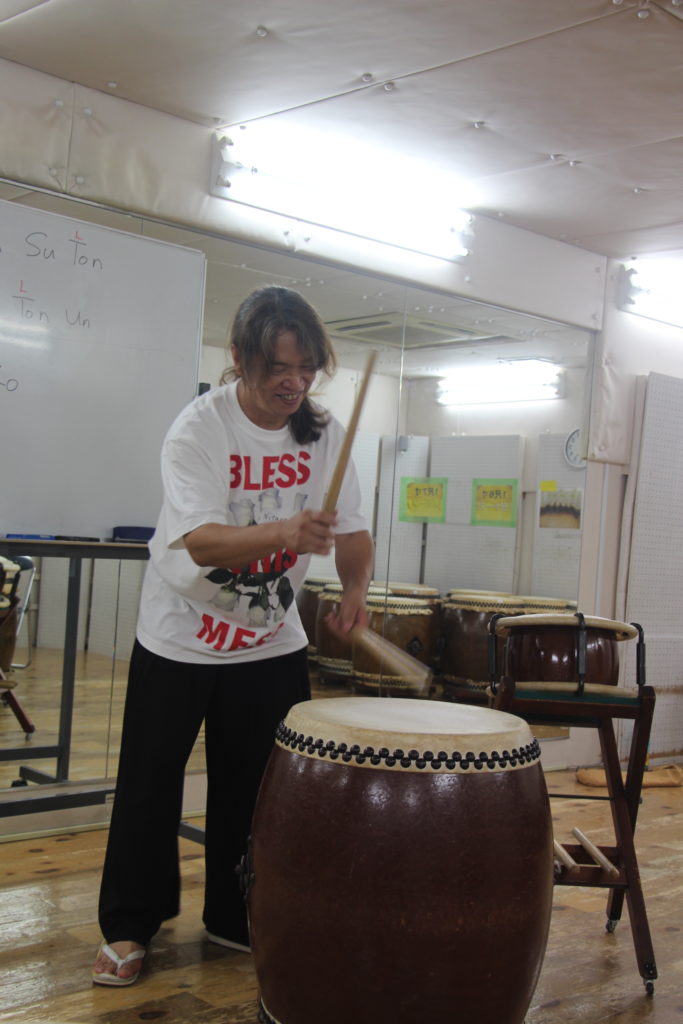
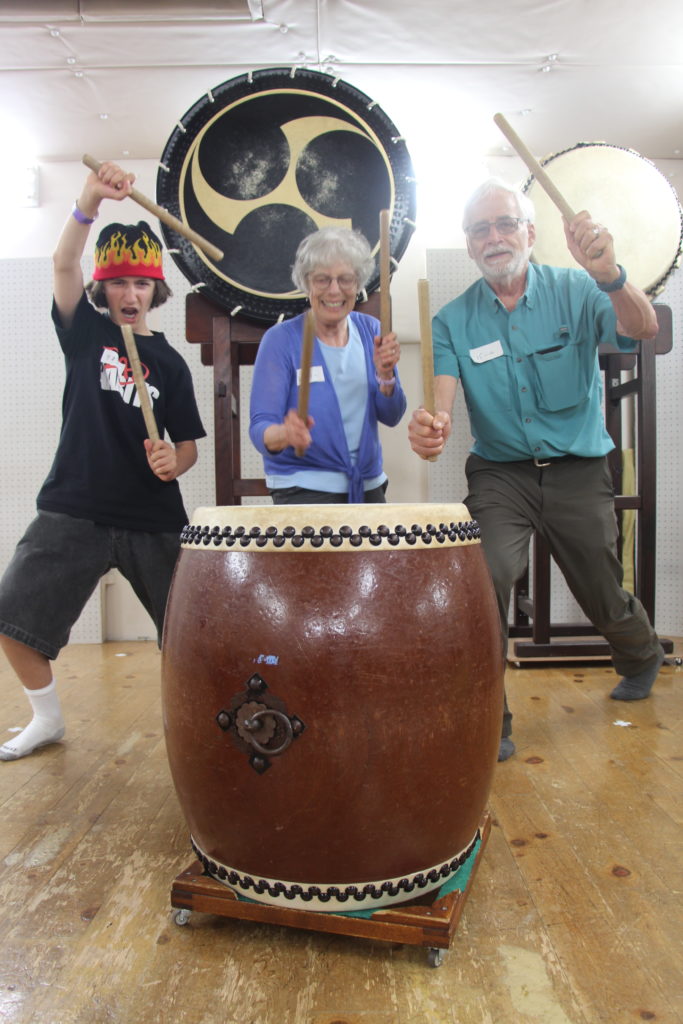
We all had a great time working with Nitaro, and toward the end of our lesson, we put down our drumsticks to watch Nitaro and Tenn perform a lively jam session.
Needless to say, we three slept like babies after such a long and event-filled day.
We all got up early on our next to the last day in Kyoto, boarded a bullet train, and headed 200 miles west to Hiroshima. Getting there and back by bullet train on the Nozomi Shinkansen line took an hour and 40 minutes each way. There is a faster bullet train that takes only one hour and 15 minutes, but our Japan Rail Pass did not include this speedier line.
We were feeling more than a little apprehensive as the train sped onward to the city which, on August 6, 1945, became the target of the world’s first atomic bomb attack. Our goal was to visit the sobering Hiroshima Peace Memorial Museum first, and then to walk in Peace Memorial Park. It was to be a difficult time of reflection not only for what we witnessed, but because the rain was incessant, adding to an already somber mood.
Walking through the many rooms of the Hiroshima Peace Memorial Museum was moving because of the items that had been salvaged after the bomb had been dropped, such as a melted bicycle, tattered clothes, and a clock that had stopped at 8:15 am. But the most powerful images were the oversized photos of the victims of this horrific tragedy and their families’ testimonials.
The museum was arranged so that visitors moved along a long and wide hall that meandered along. This passageway was very crowded with Japanese visitors and many, many groups of school children. When you think about it, you realize that the Japanese learn this history and young people in the US do not. Tennessee moved ahead of us as we shuffled along the exhibits. We found him at the end of this part of the museum, sitting on a bench staring out at the rainy Peace Park with the skeleton of the one remaining building in the misty distance…

The large groups of school children we saw inside the museum were also seen outside in the rain in Peace Memorial Park. We met them at the cenopath (made of concrete in a curved form which lists the names of all known who died in the bombing).
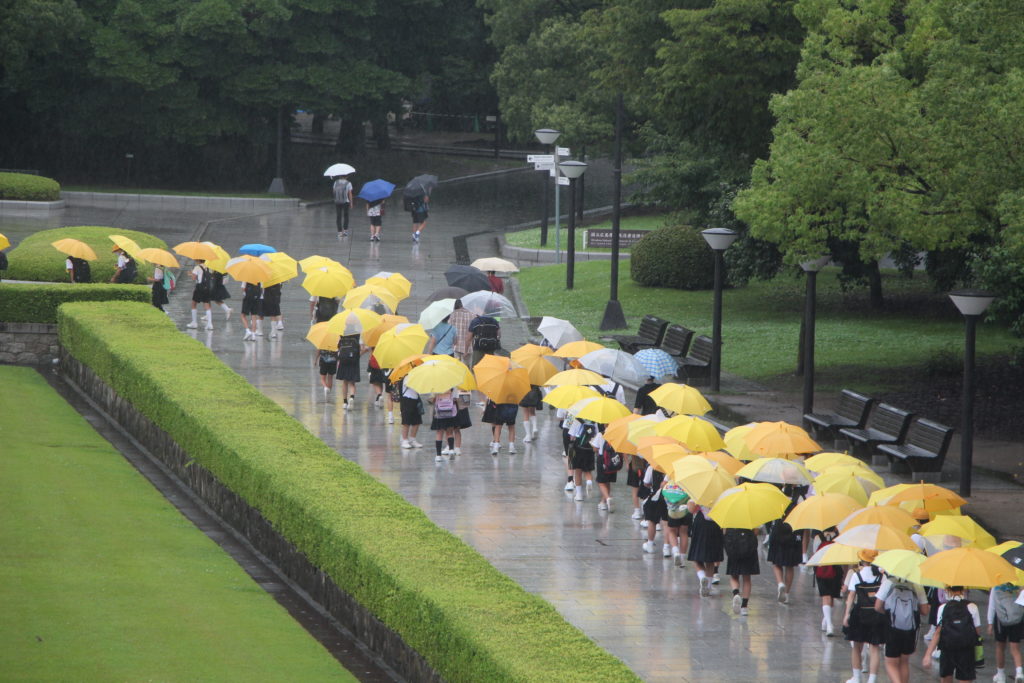
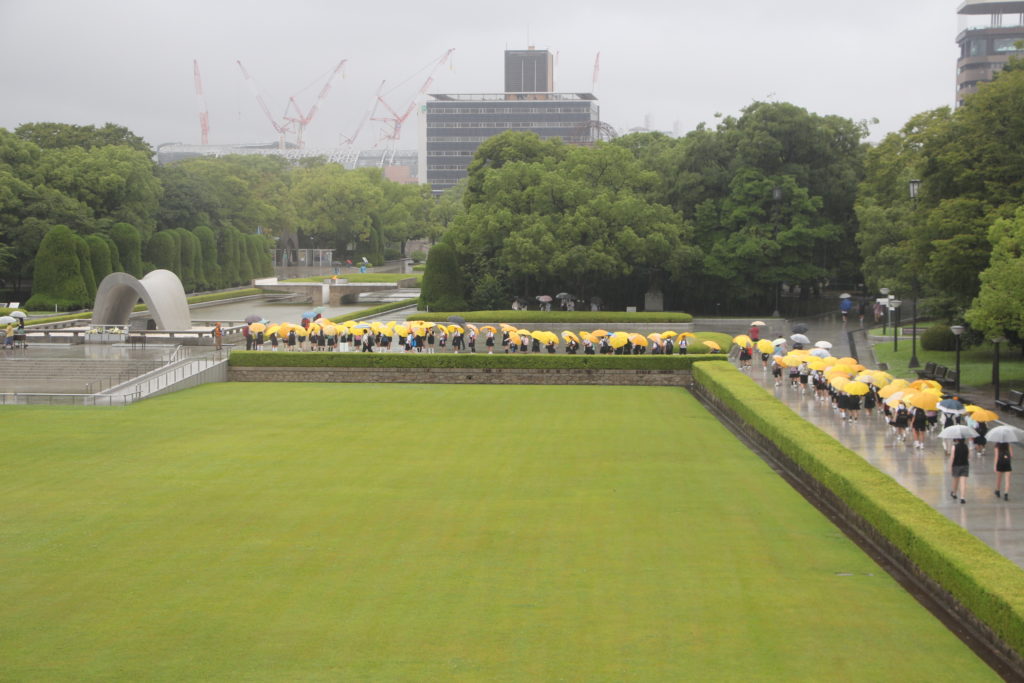
We met them at the Children’s Peace Monument (erected because of the powerful story of Sadako Sasaki, who when she was 11 and got leukemia started to fold 1000 cranes symbolizing joy and longevity), the Flame of Peace, and the Atomic Bomb Dome, which we all viewed from a distance.
Between decompressing from our museum experience and visiting the park, we went in search of the famous okonomiyaki or savory pancakes at Carter’s recommendation. Escaping the rain, we found a basement restaurant serving these delicious delights made of 2 pancakes with assorted fillings of cabbage plus other vegetables or fish or meat. Val enjoyed the vegetarian option and Tenn and Leslie loved the shrimp and veggie version of this signature dish of Hiroshima.
Tenn finally got to sleep in at our hotel on the morning of our last day when Val and Leslie went off with our guide, ‘Anne’, to learn about Nishijin crafts of Kyoto. The Nishijin area of Kyoto is famous for its textiles which have been produced for almost 1000 years. The goal of specific shops was to produce elegantly beautiful fabrics to clothe the emperor, his family, and other wealthy individuals of Kyoto. This area unfortunately was devastated in the middle of the 15th century in the Onin War, but it made a comeback and today is still known for its manufacturing of fine fabrics.
We first walked with Anne to a building which resembles a traditional merchant house, even though it has been converted to a museum named Orinasu-kan, or the Foundation for the Promotion of Handwoven Textiles. We had a lovely time learning about traditional Japanese handweaving and dyeing techniques.
Only one weaver was working when we visited on a Saturday (there are usually 10 craftspeople who operate 14 hand looms), but she was eager to talk to us and answer our questions about her current complicated project with Anne translating. She was working on a version of a Jacquard loom and enthusiastically demonstrated working on a pattern of flowers with thousands of silk warp threads set very close together. She and Anne then guided us through the exhibits of restored Noh theater costumes and various handwoven textiles from other regions of Japan. We definitely enjoyed and appreciated the fine work which went into the making of these fabulous fabrics which provided a visual feast for the morning.
Here we see the Jacquard loom in action. When invented in about 1800 by Joseph Marie Jacquard, a large loom like this would have one operator moving the shuttle back and forth and another, perched on top where the punched cards are, would lower the heddles that fit through the holes for that particular throw of the shuttle. Here it is done with motors – very early 20th century. Luddites formed to protest this technology taking jobs away from workers.


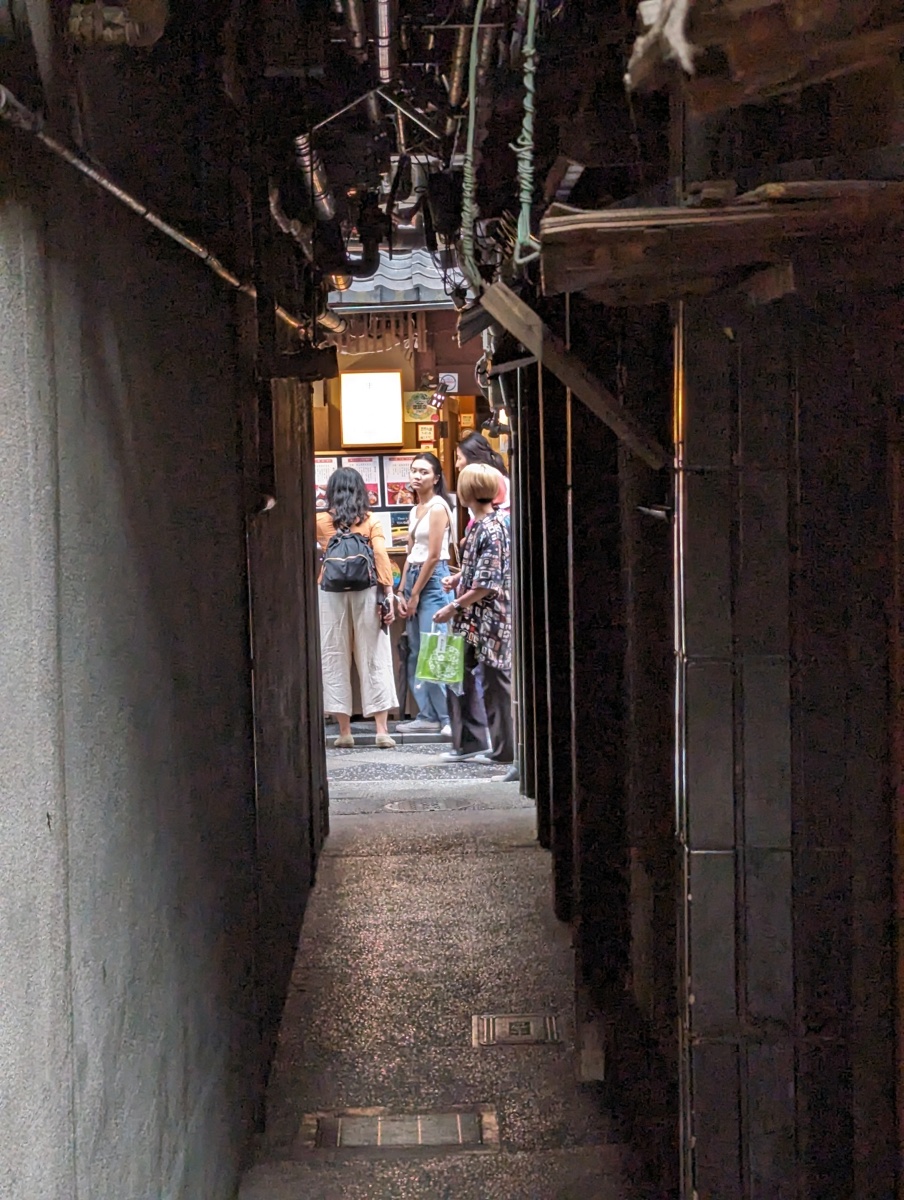
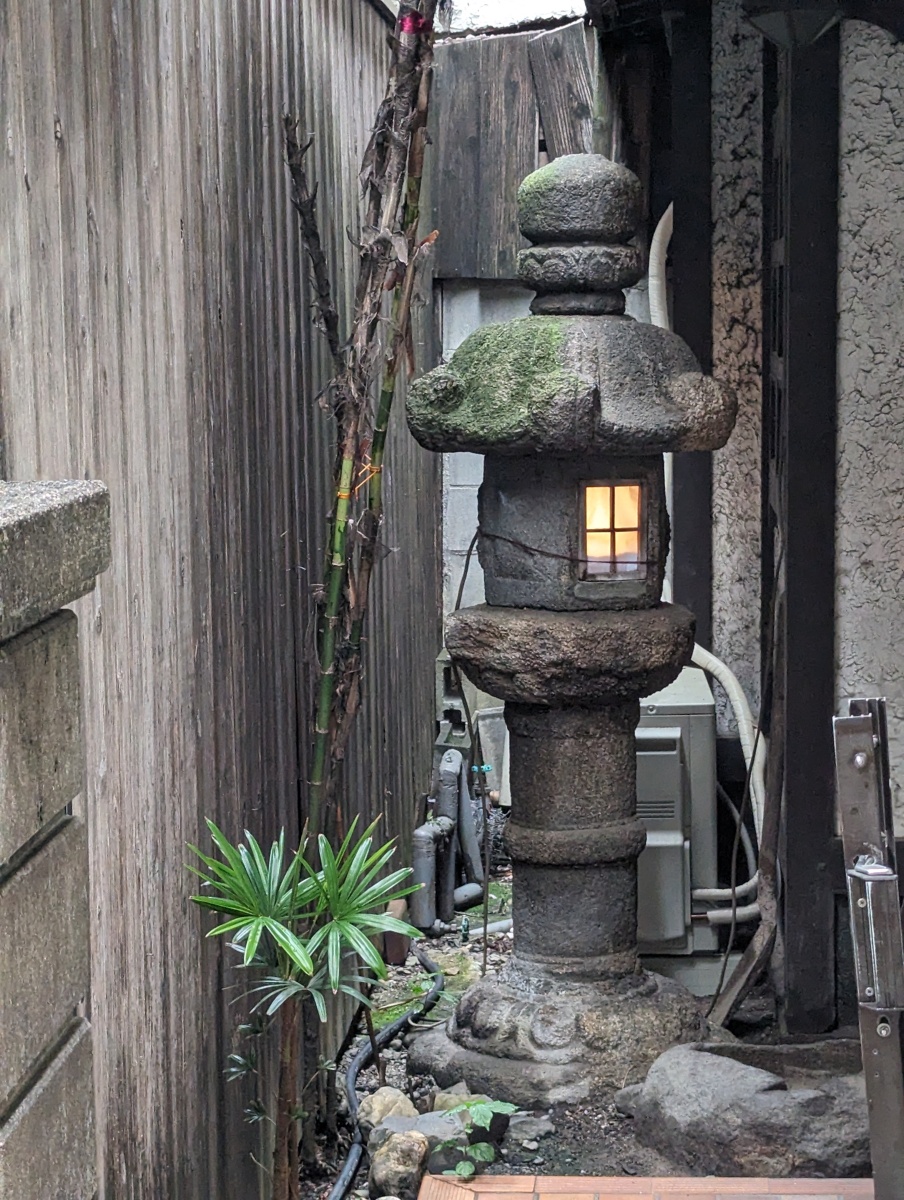
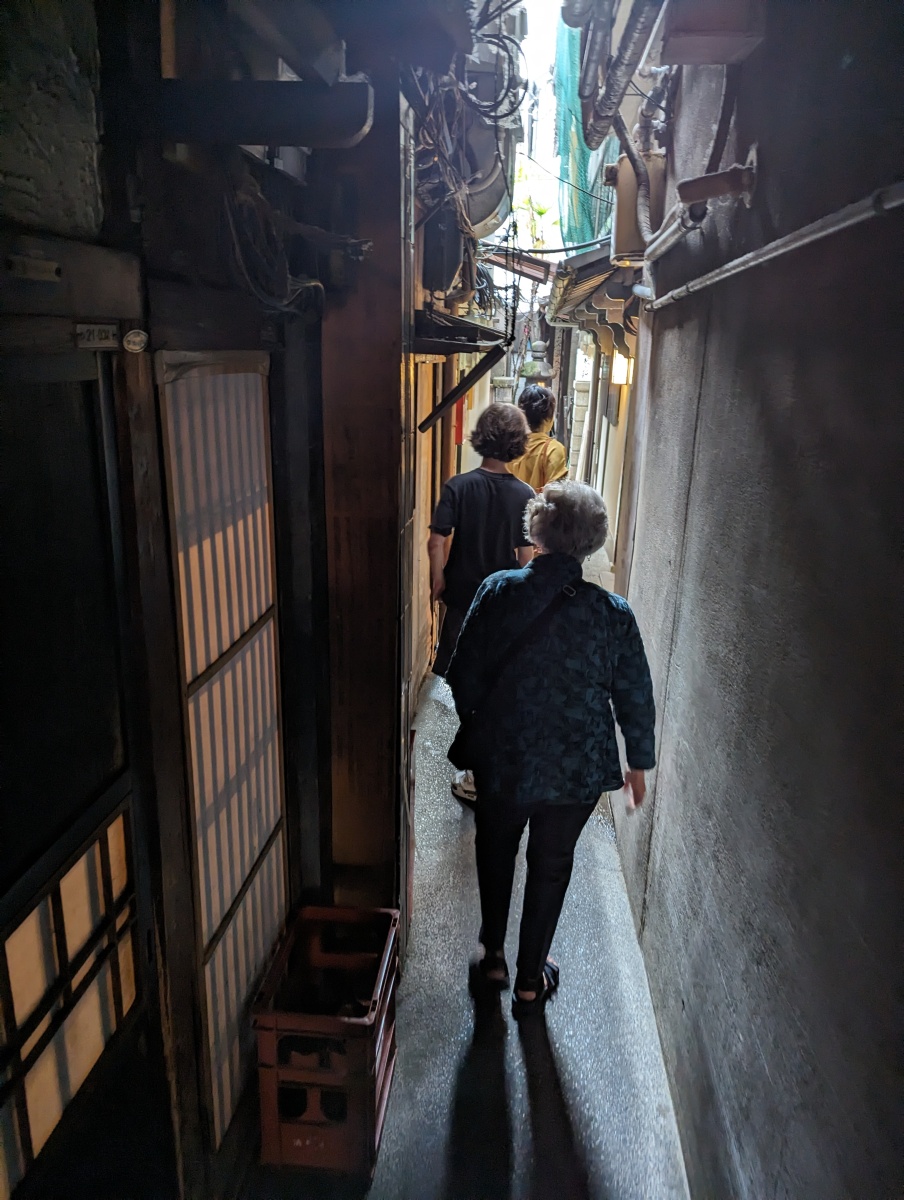
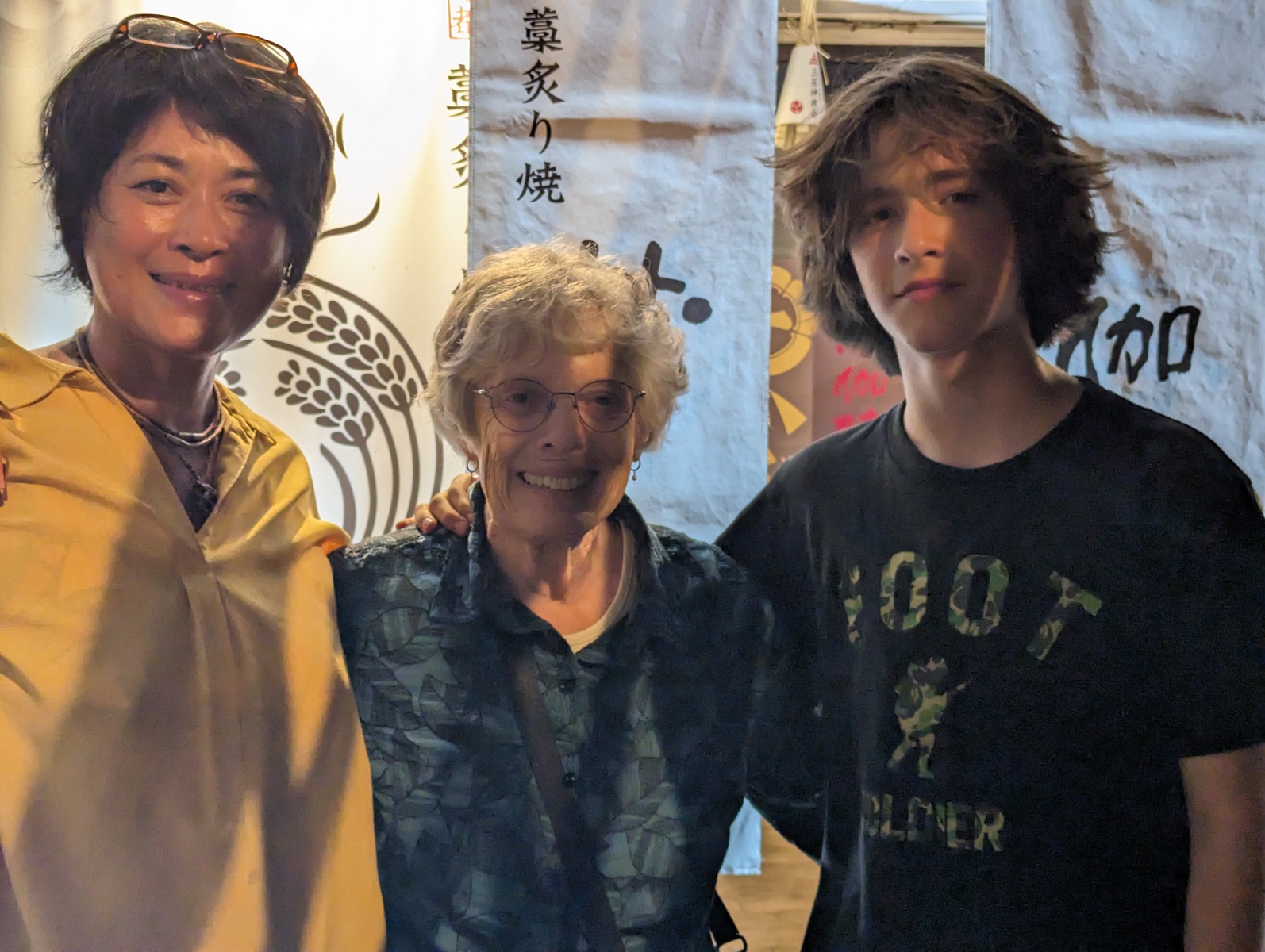
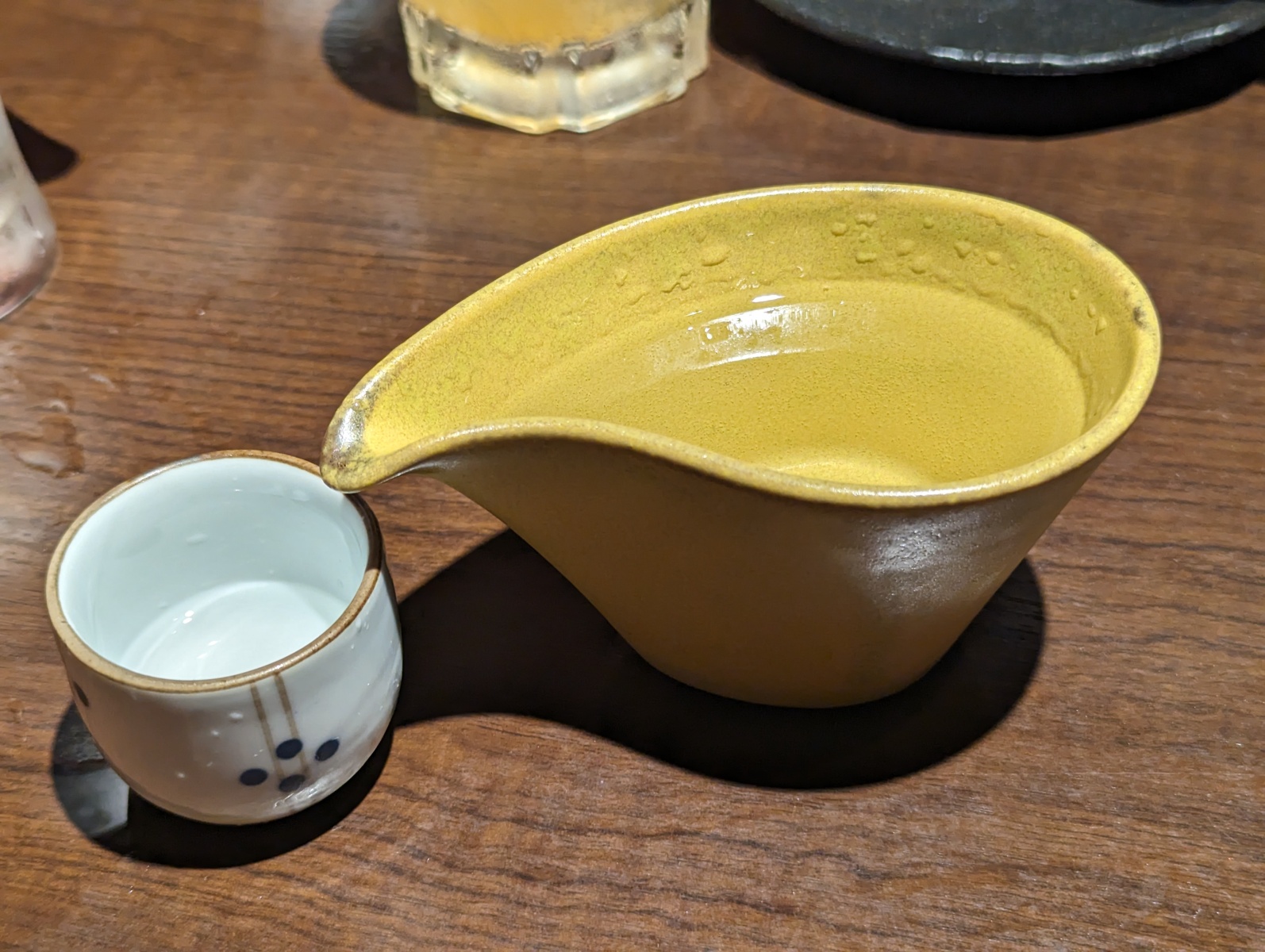

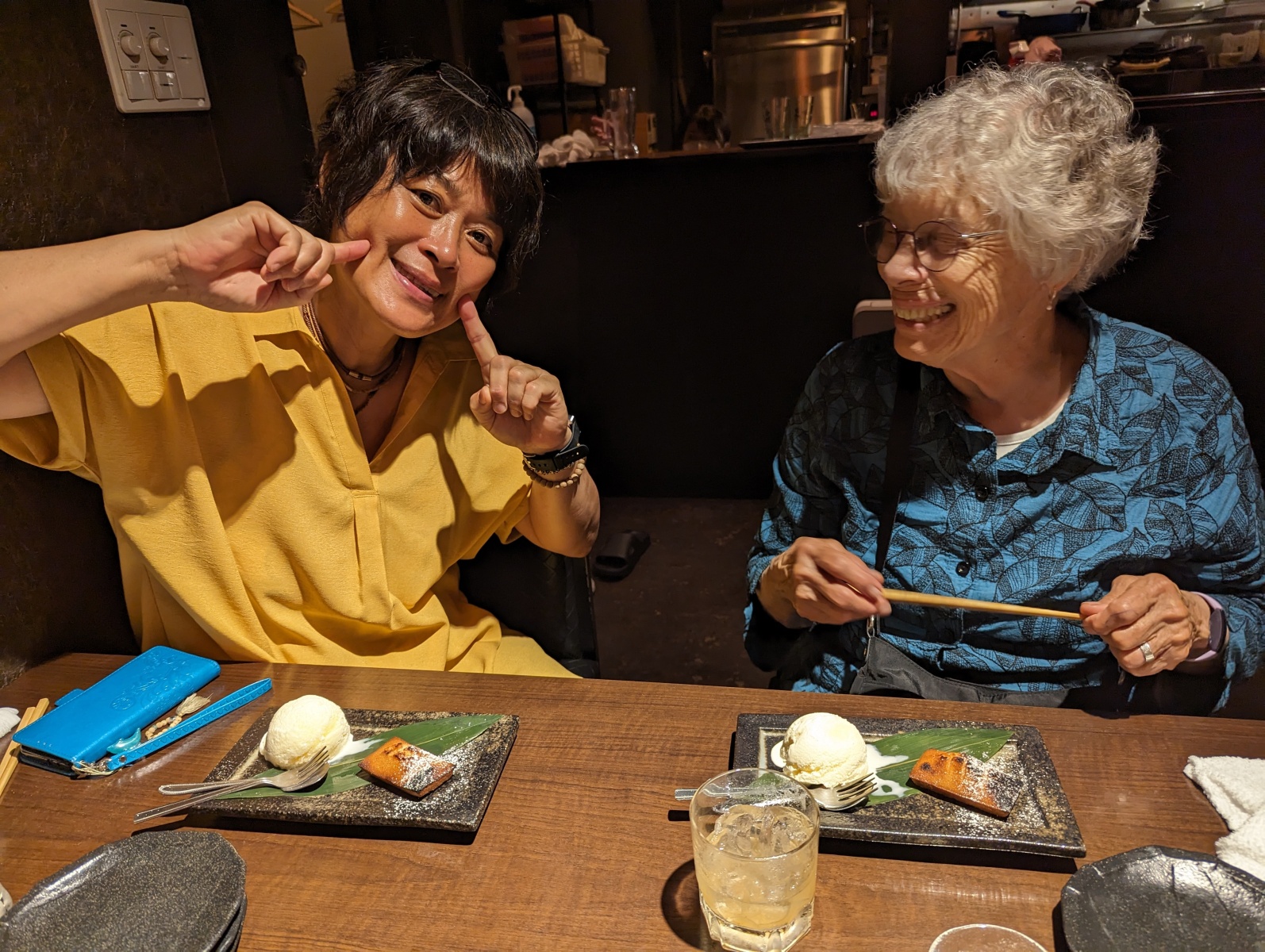


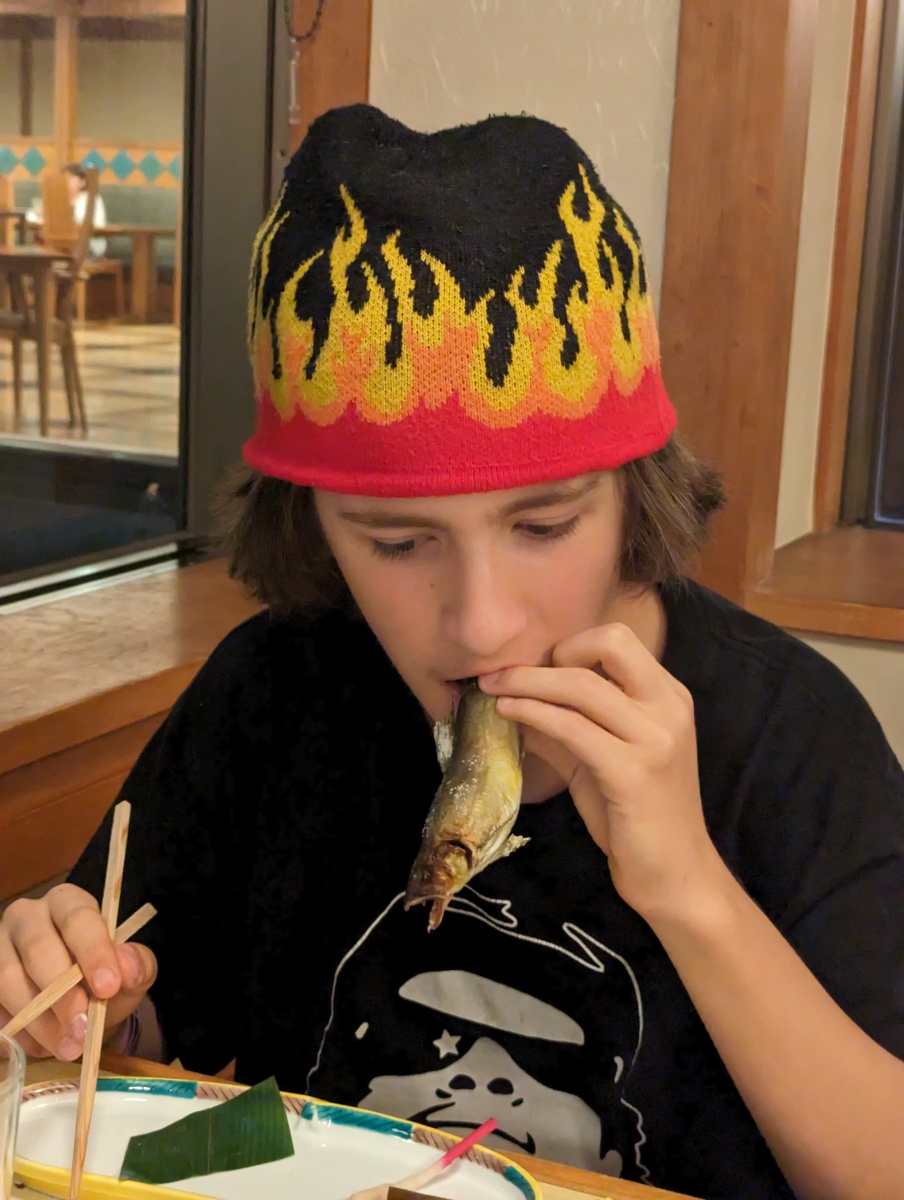


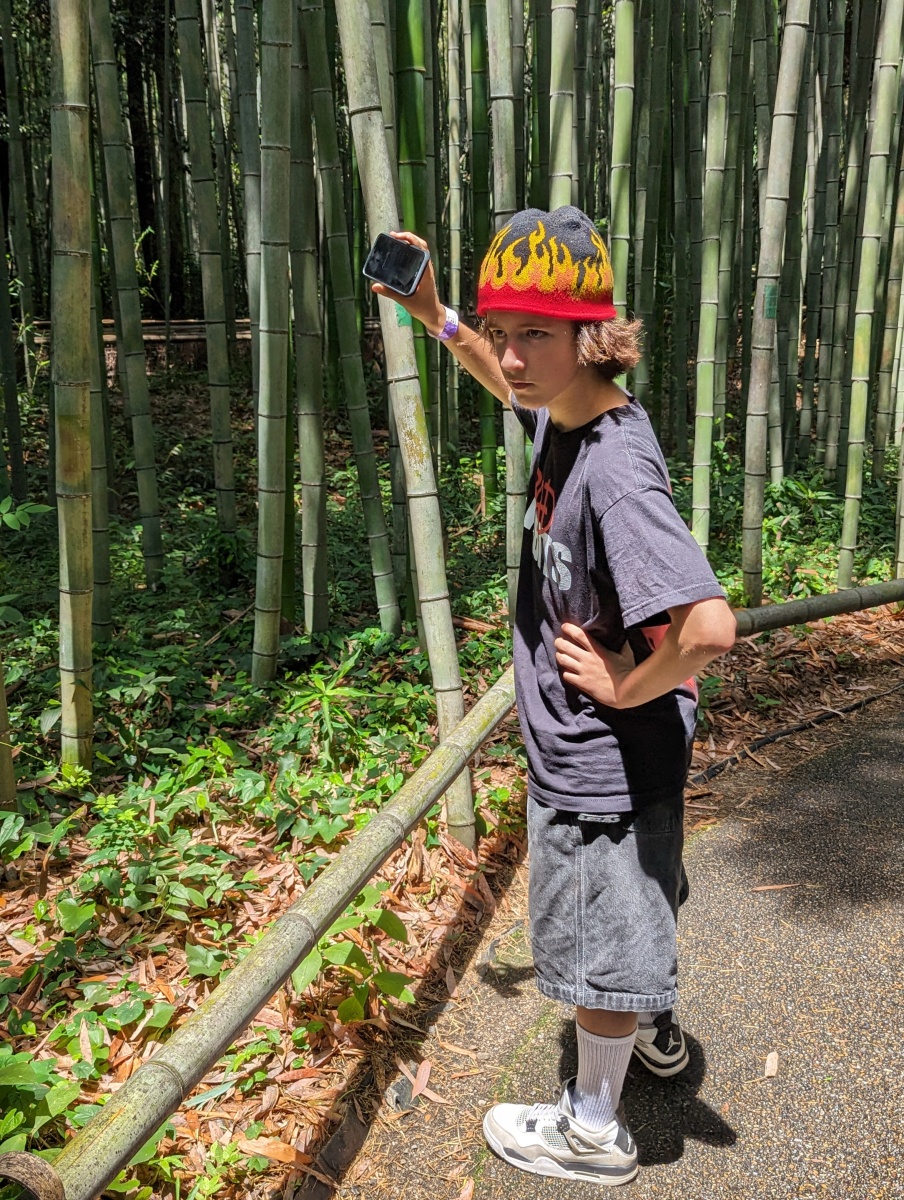

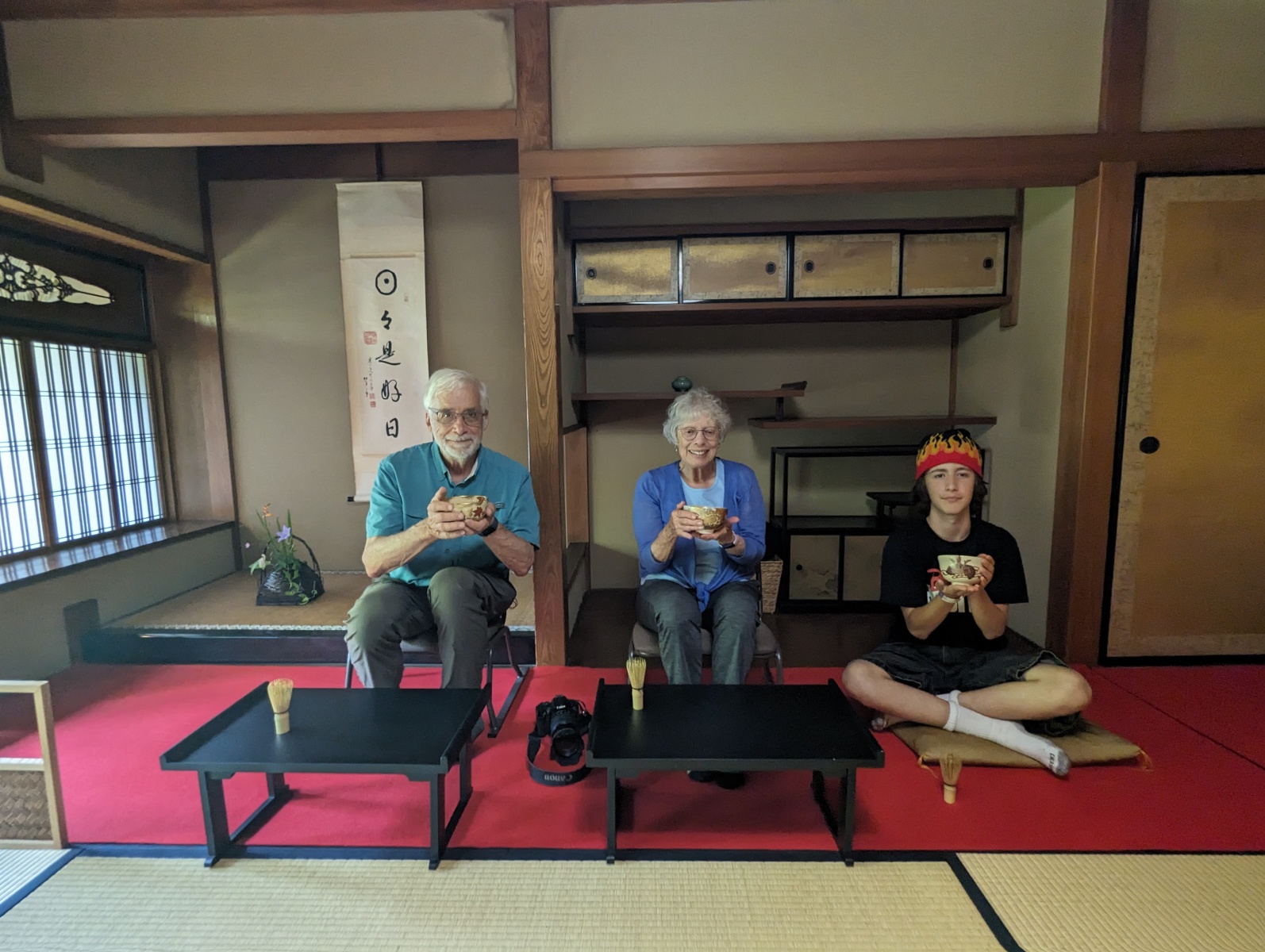



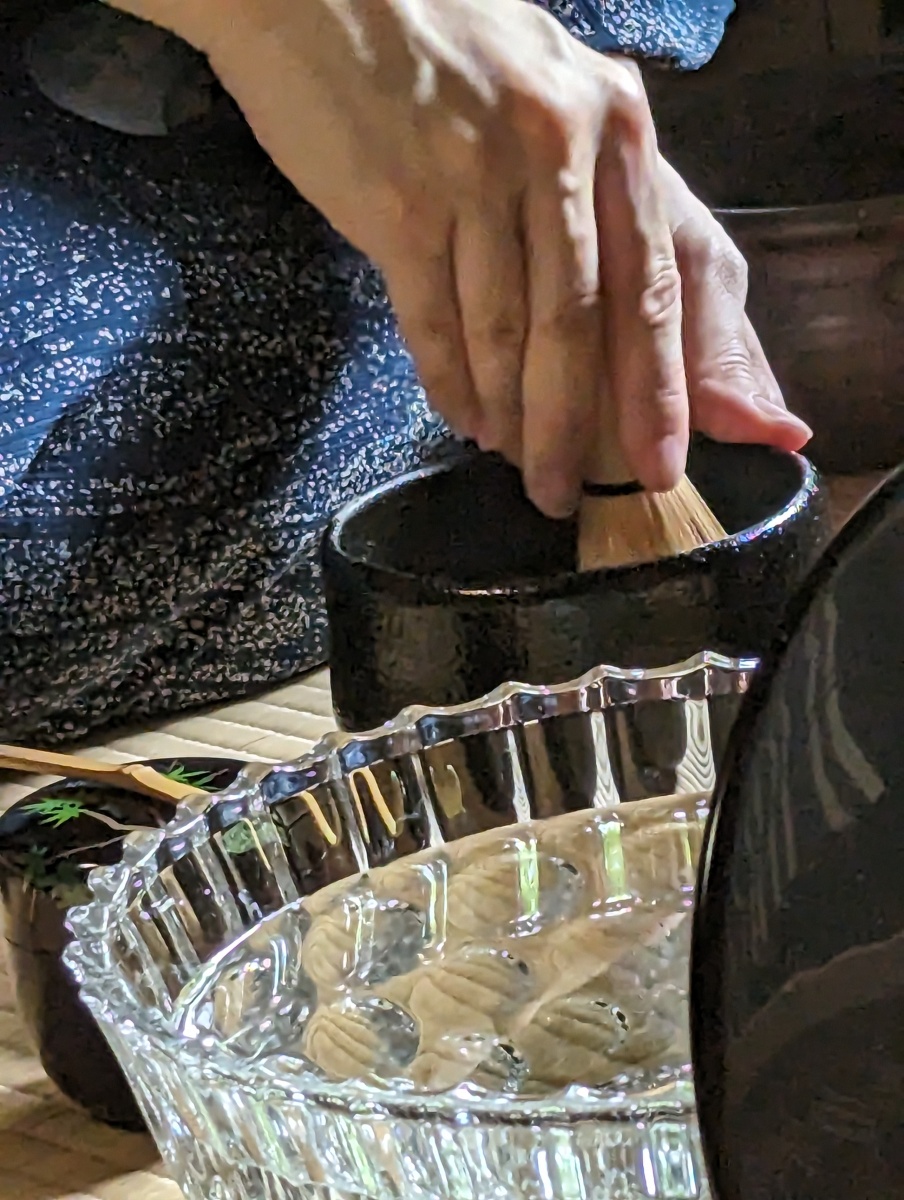
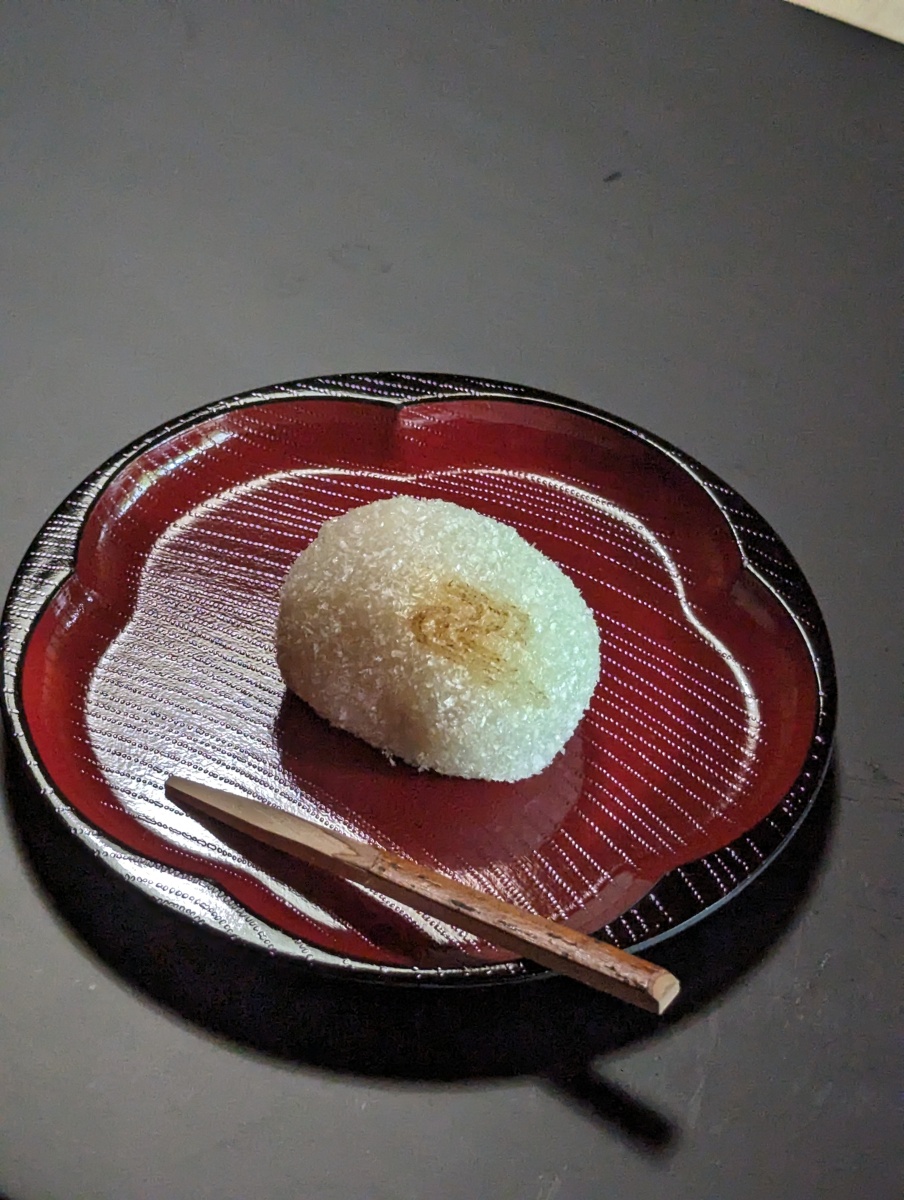

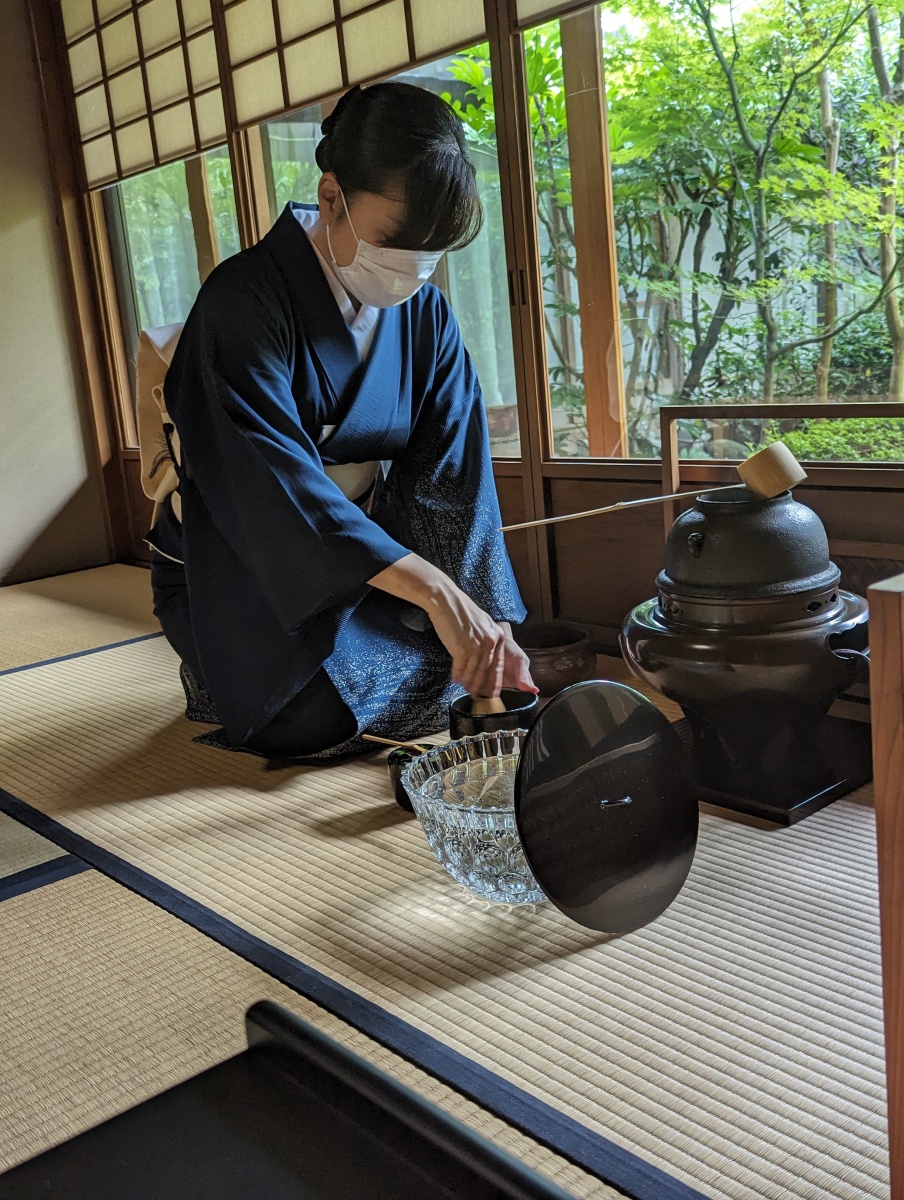
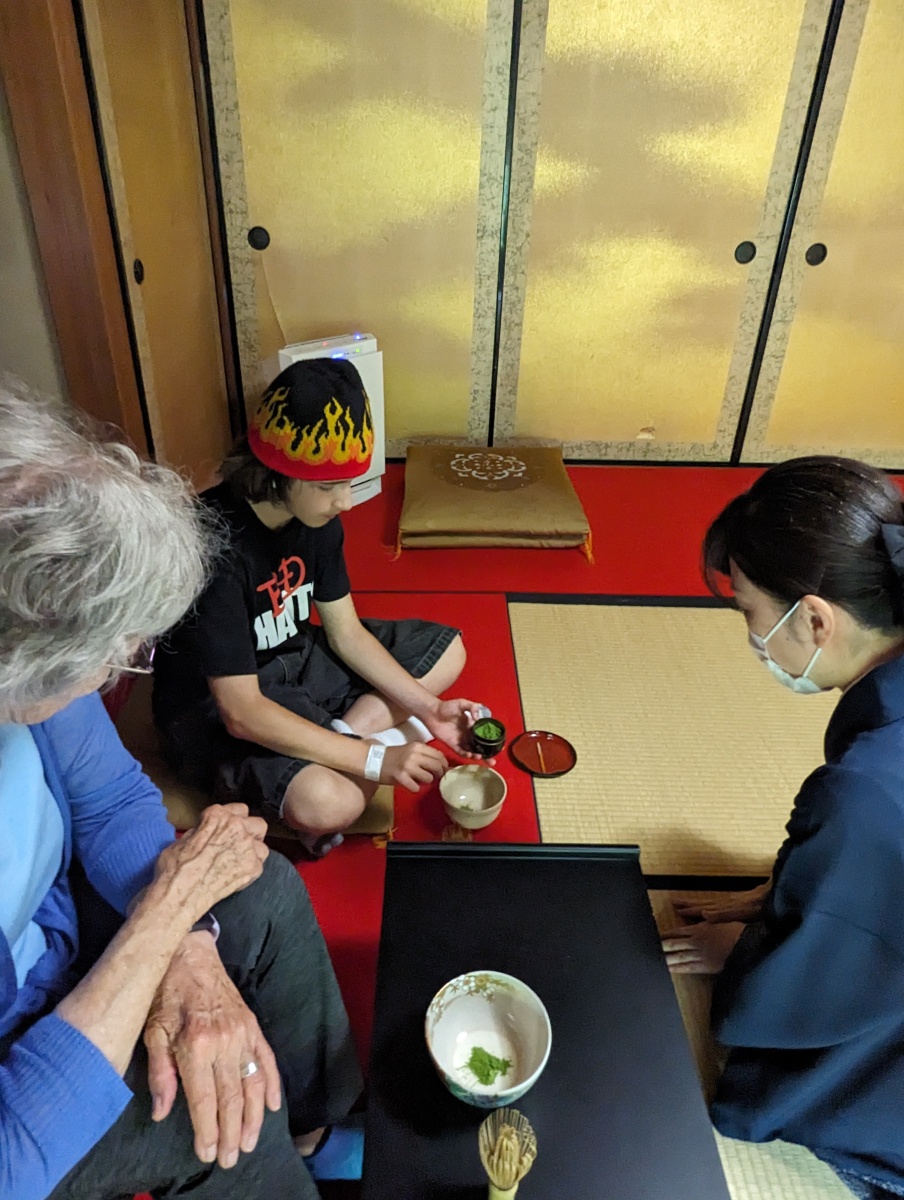



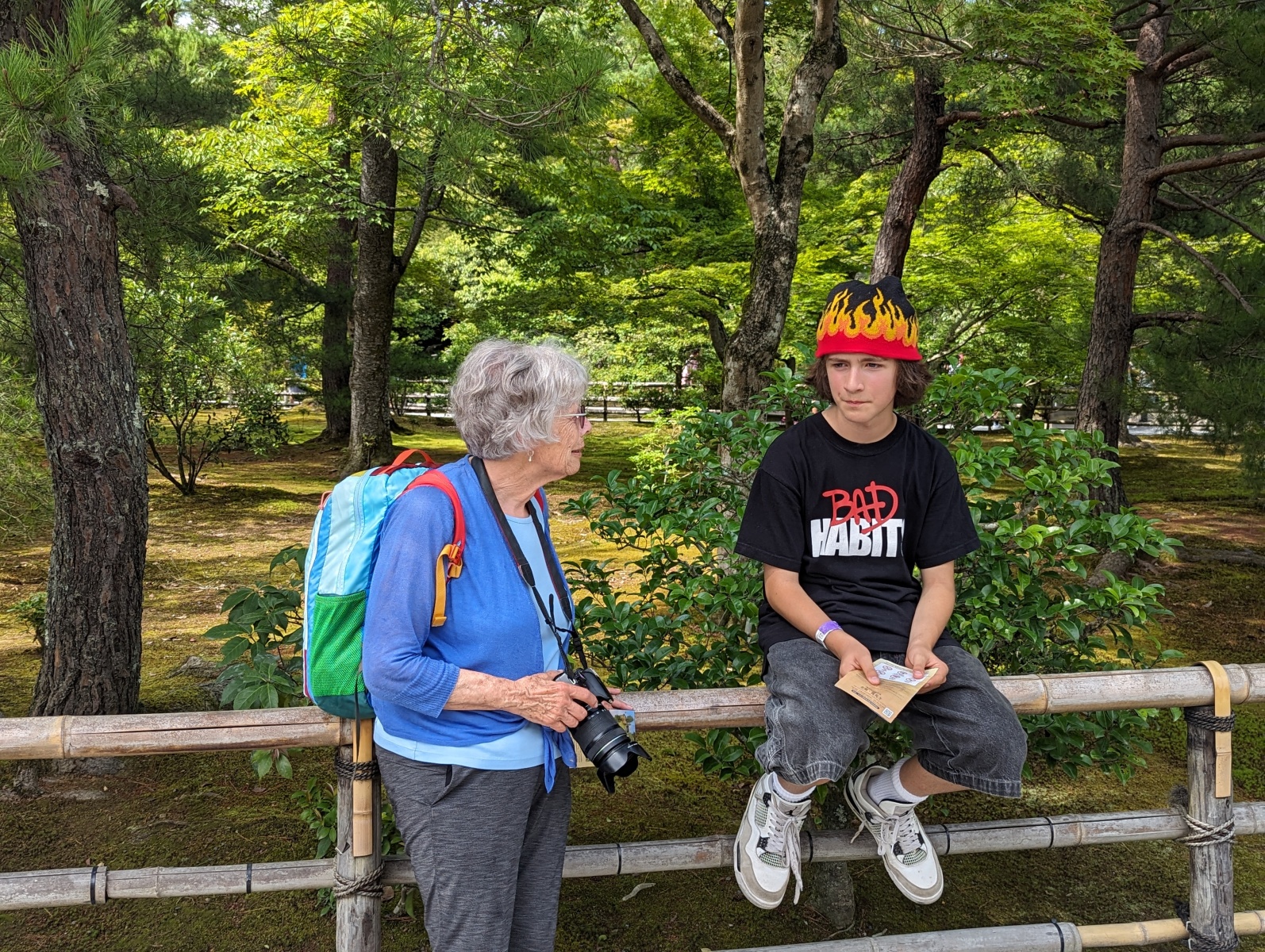
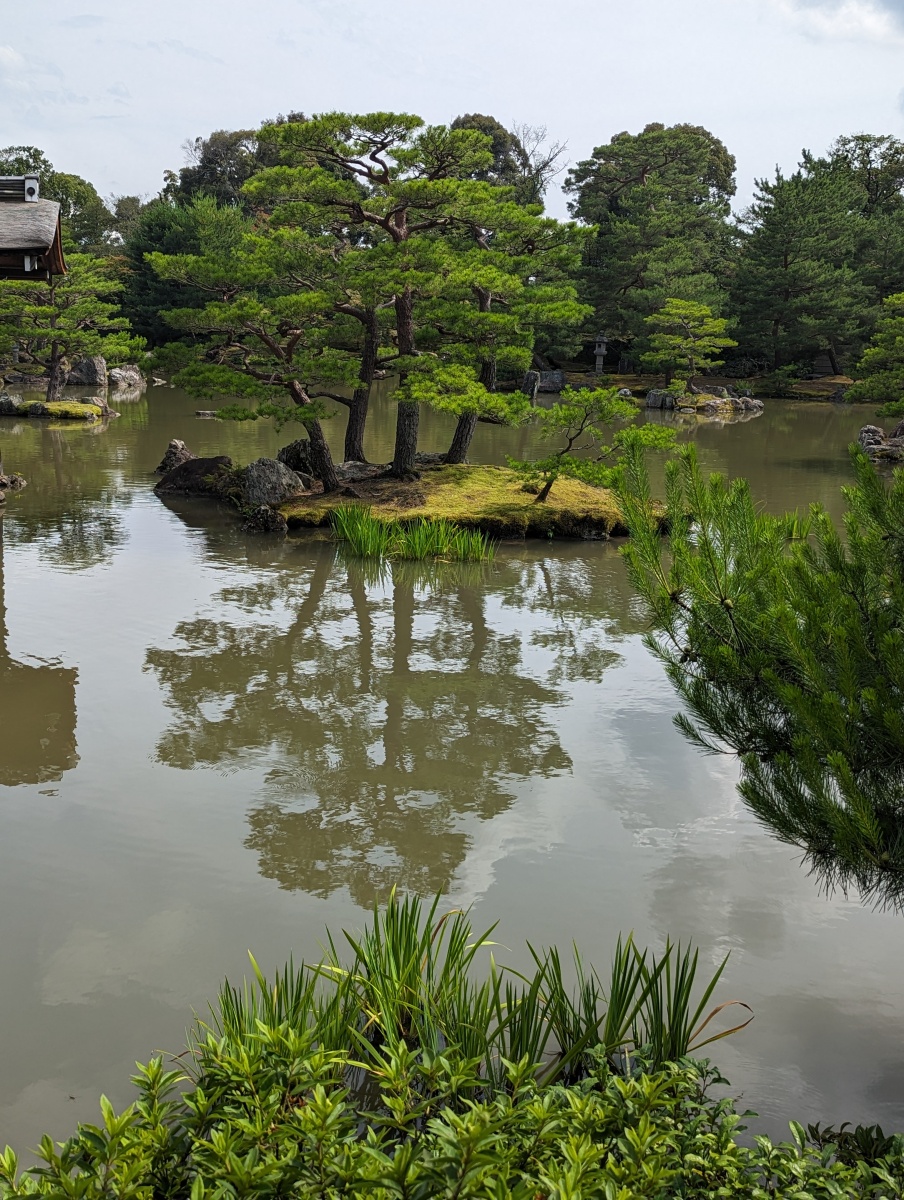
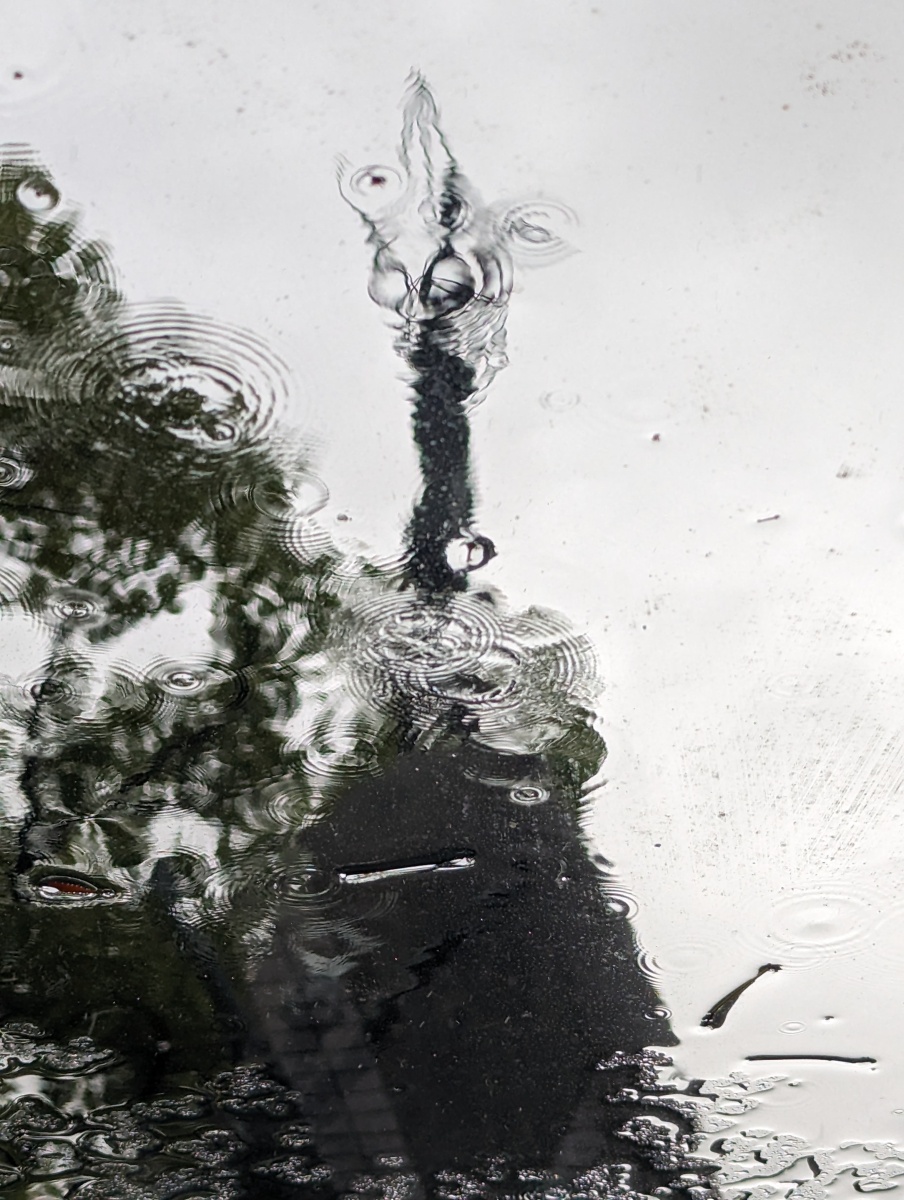



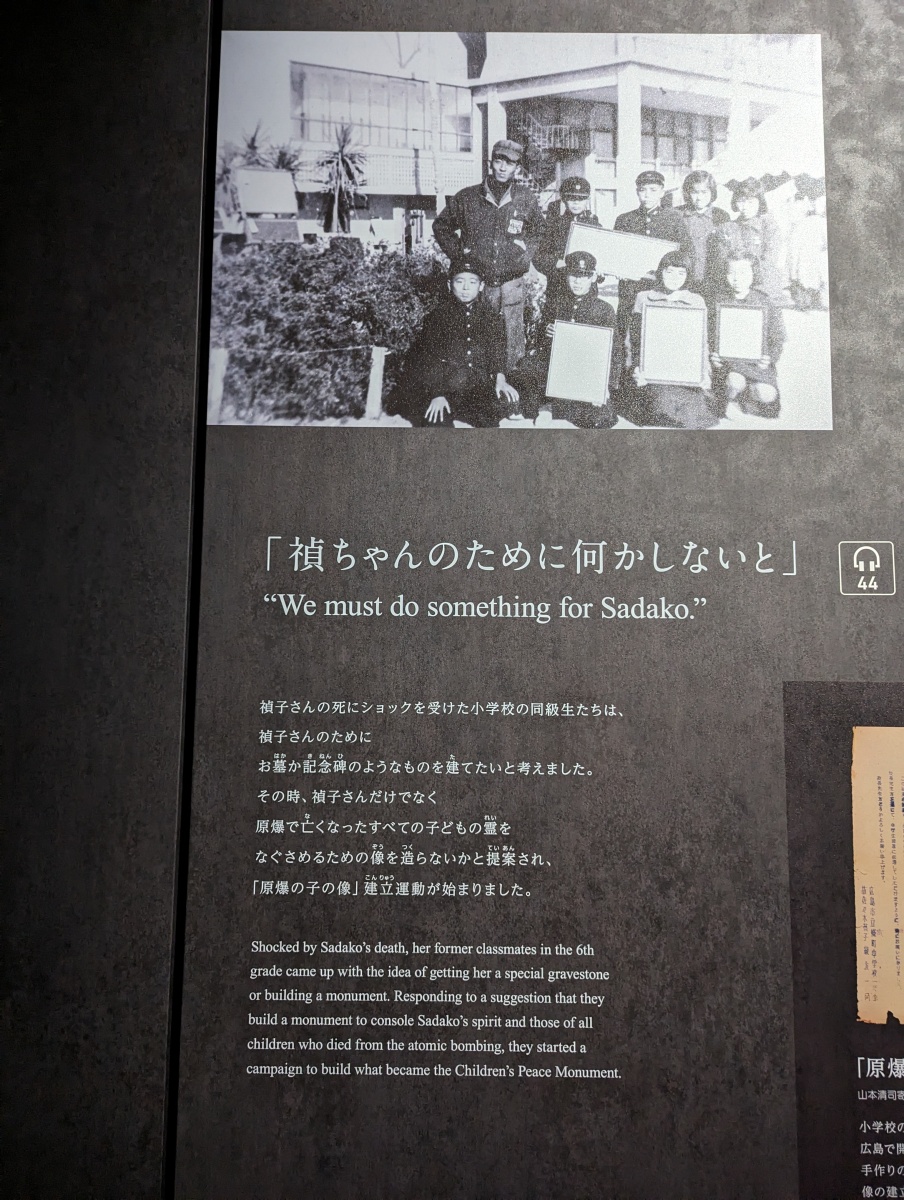
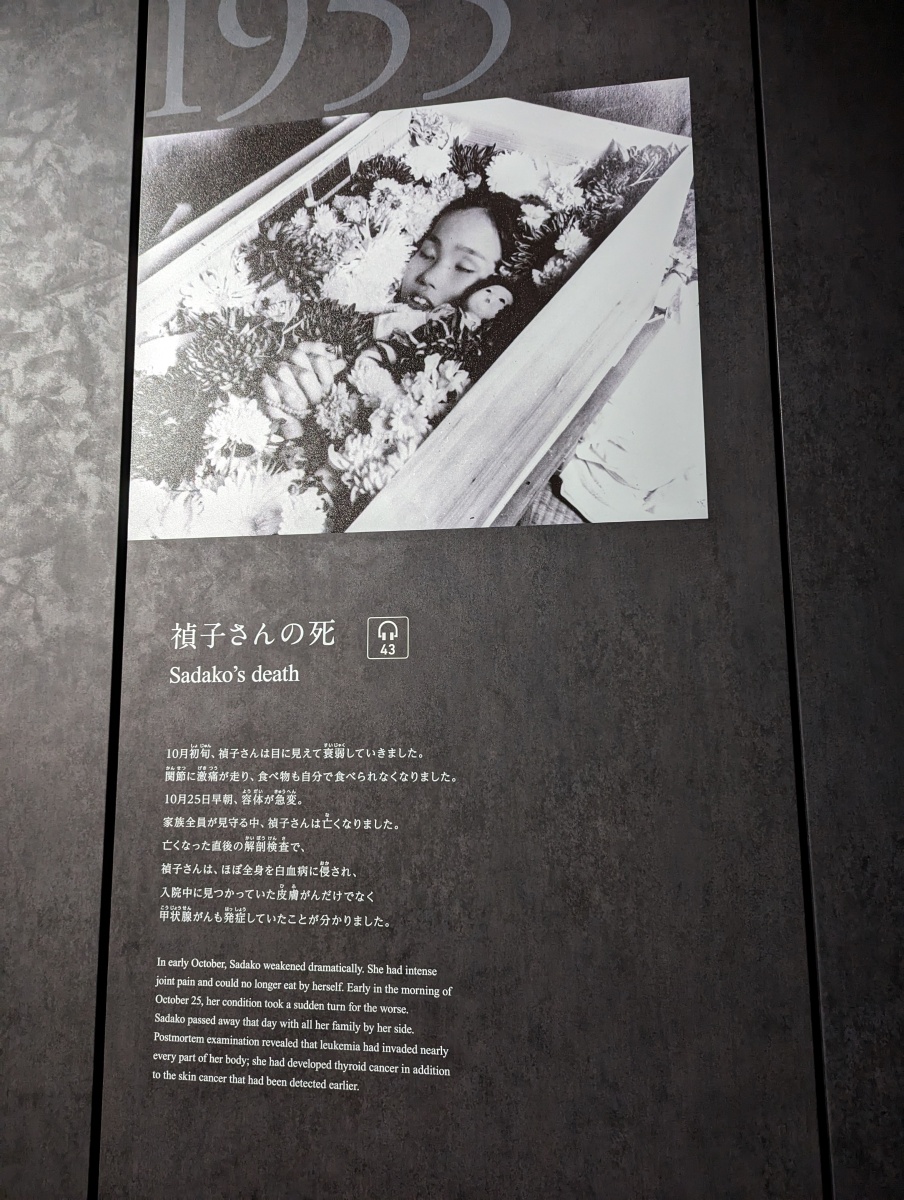
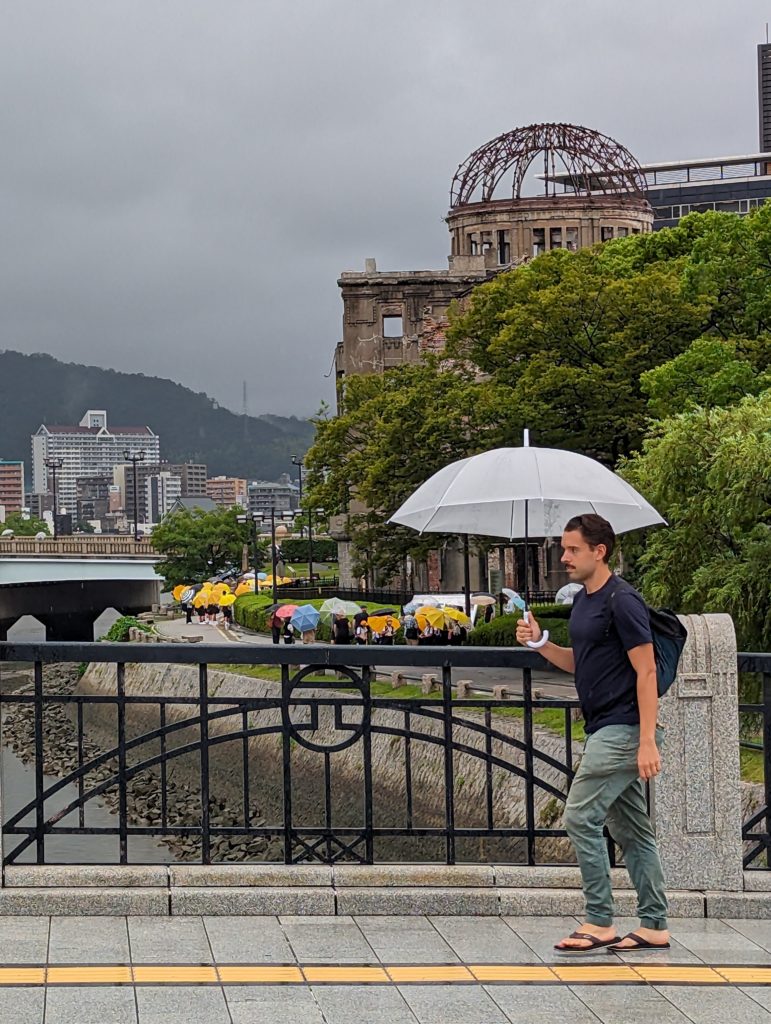

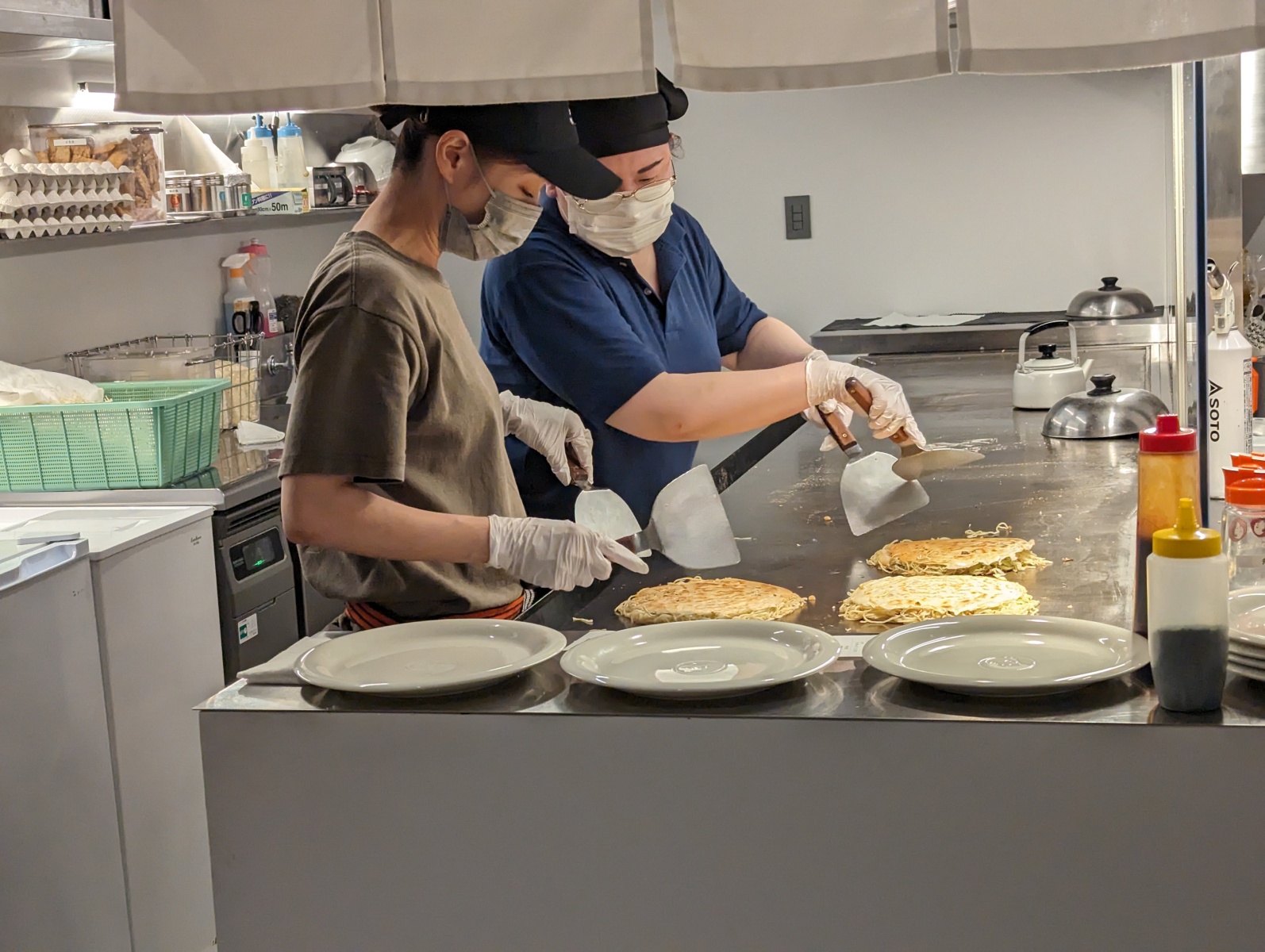
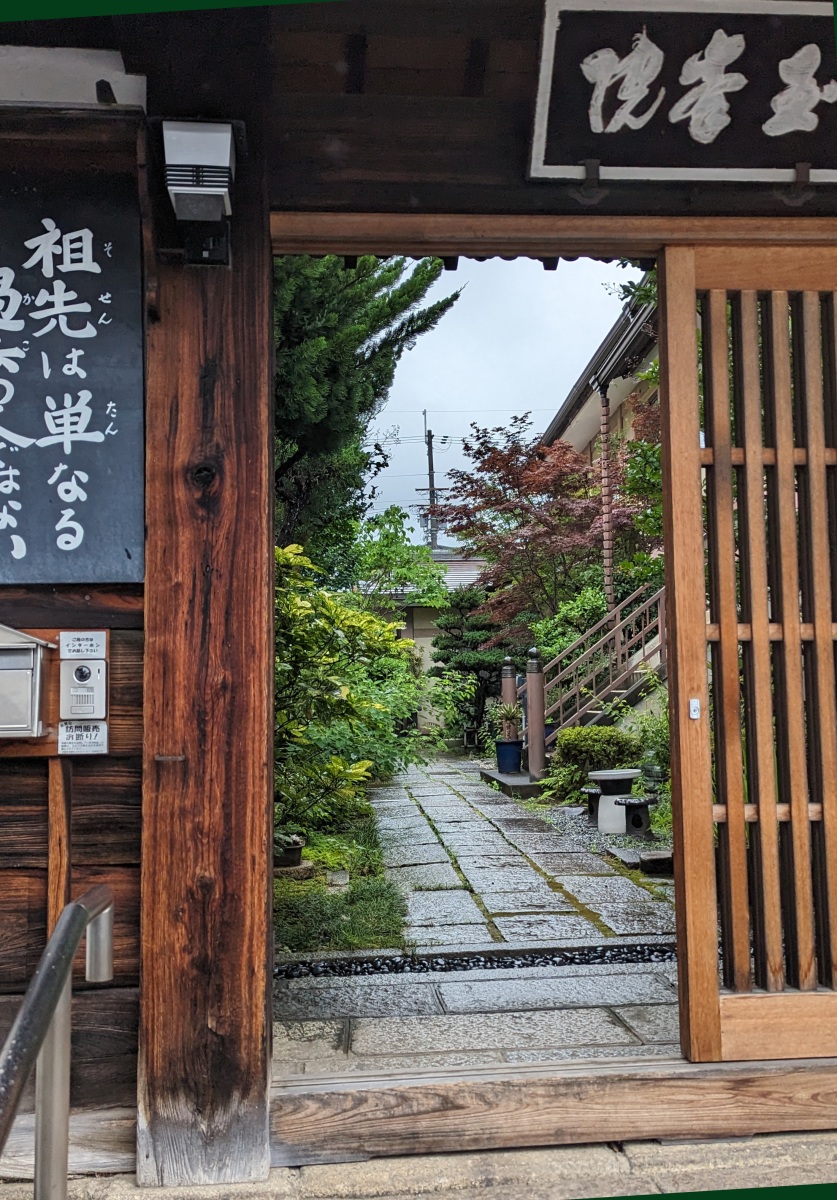

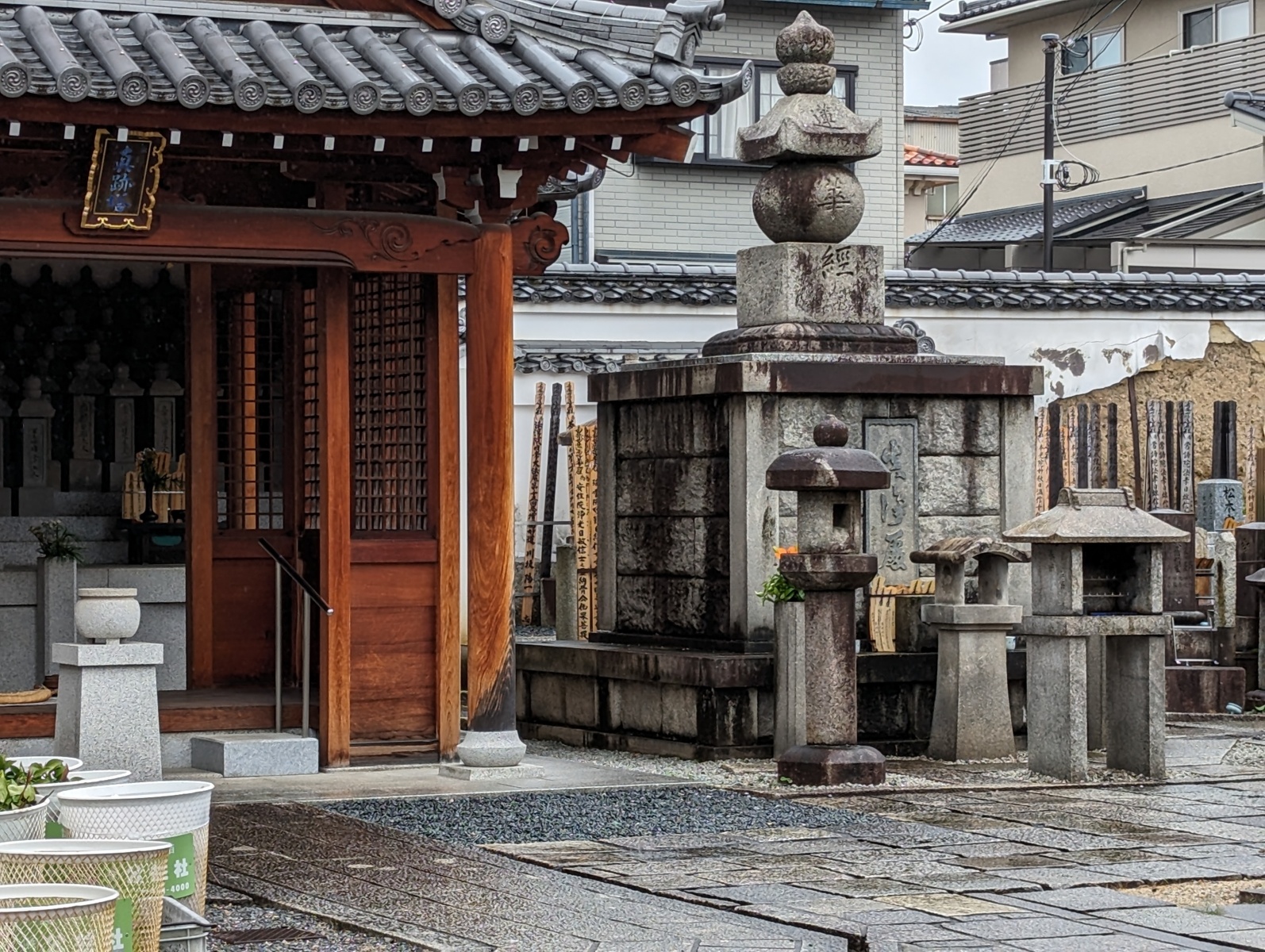

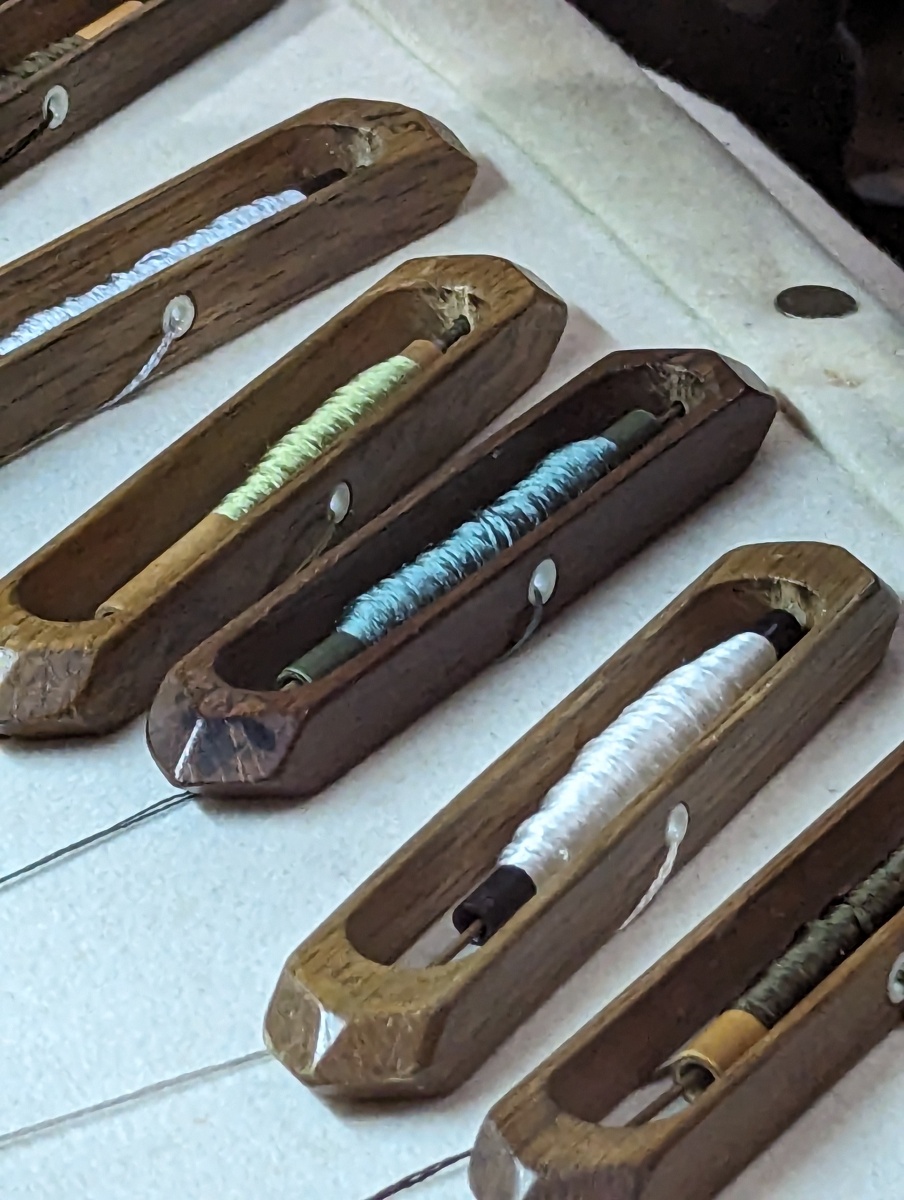
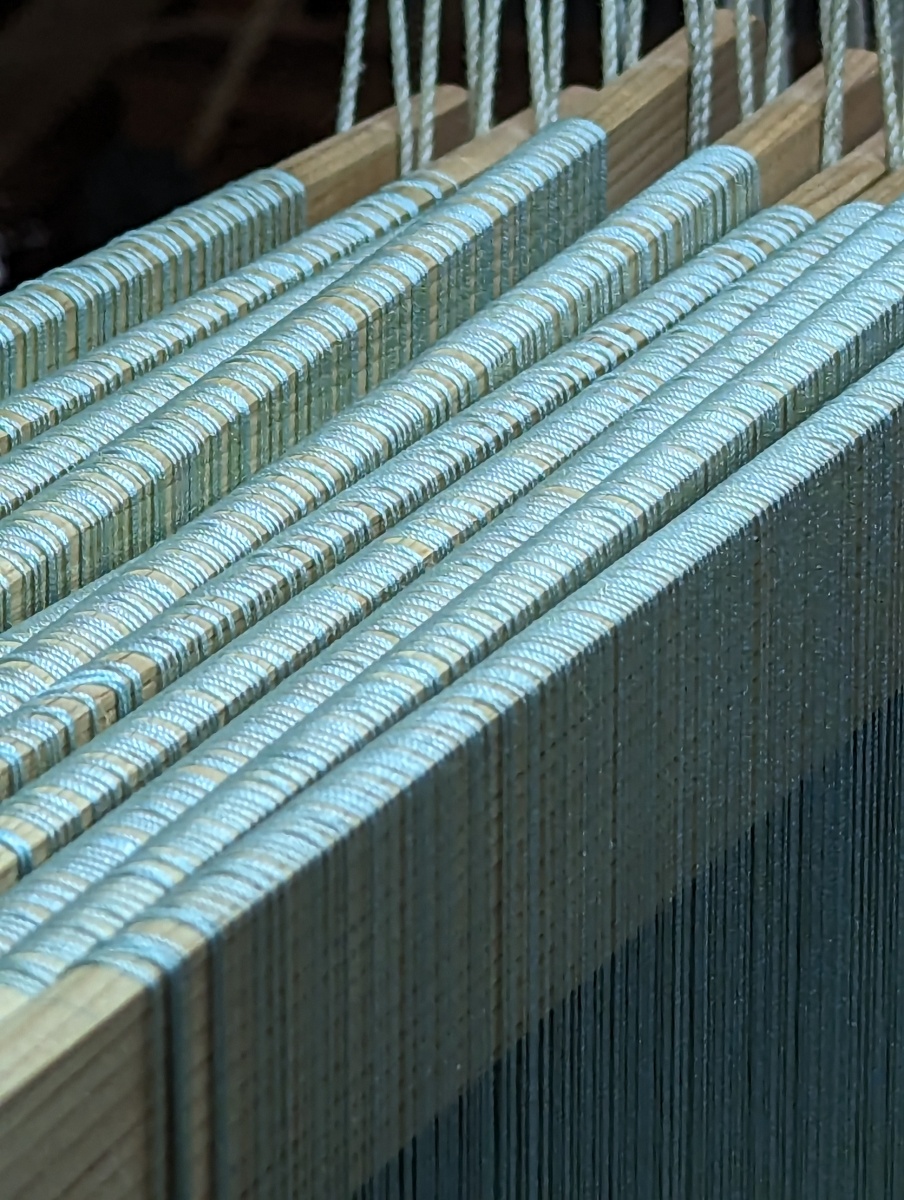
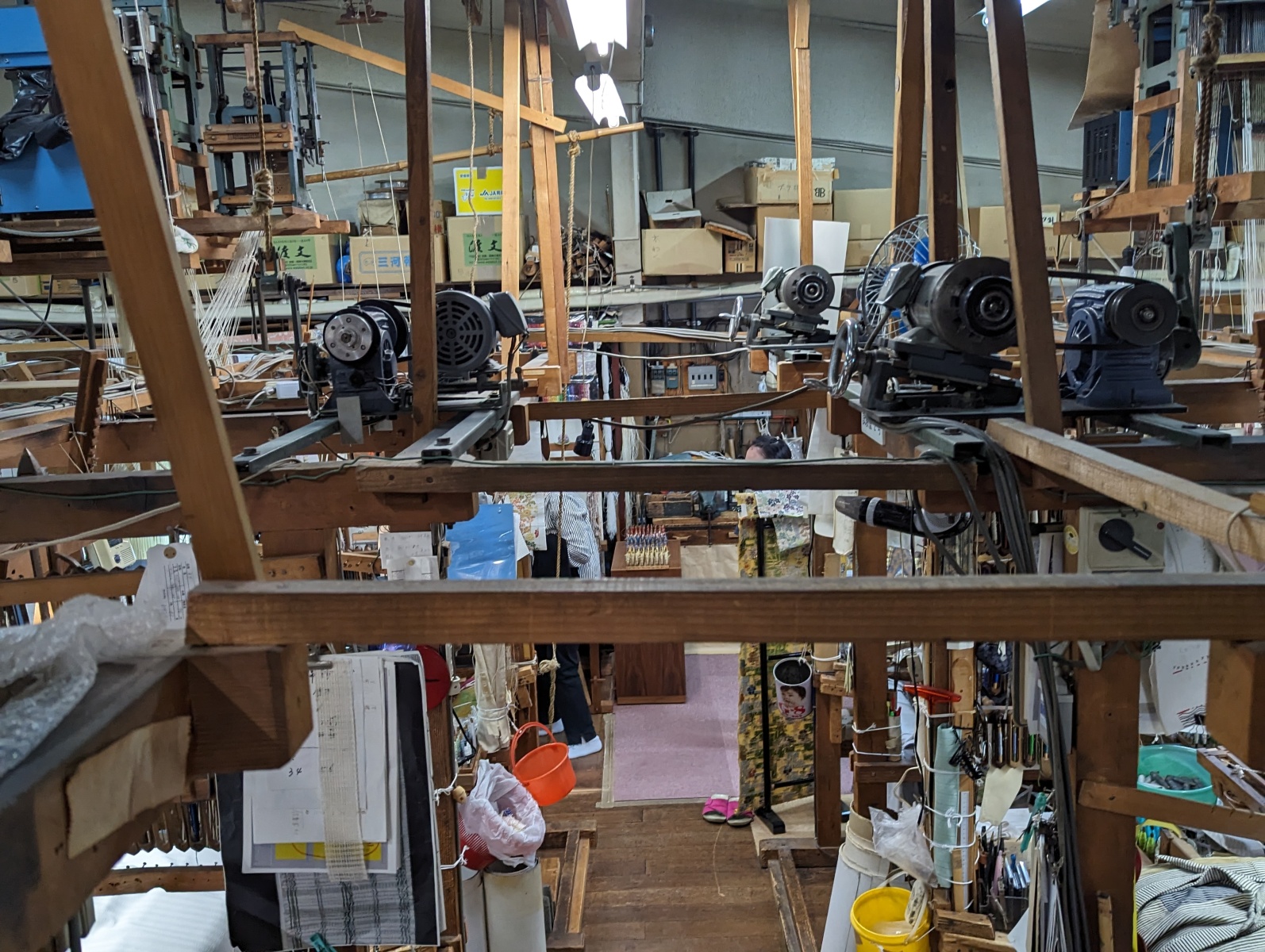
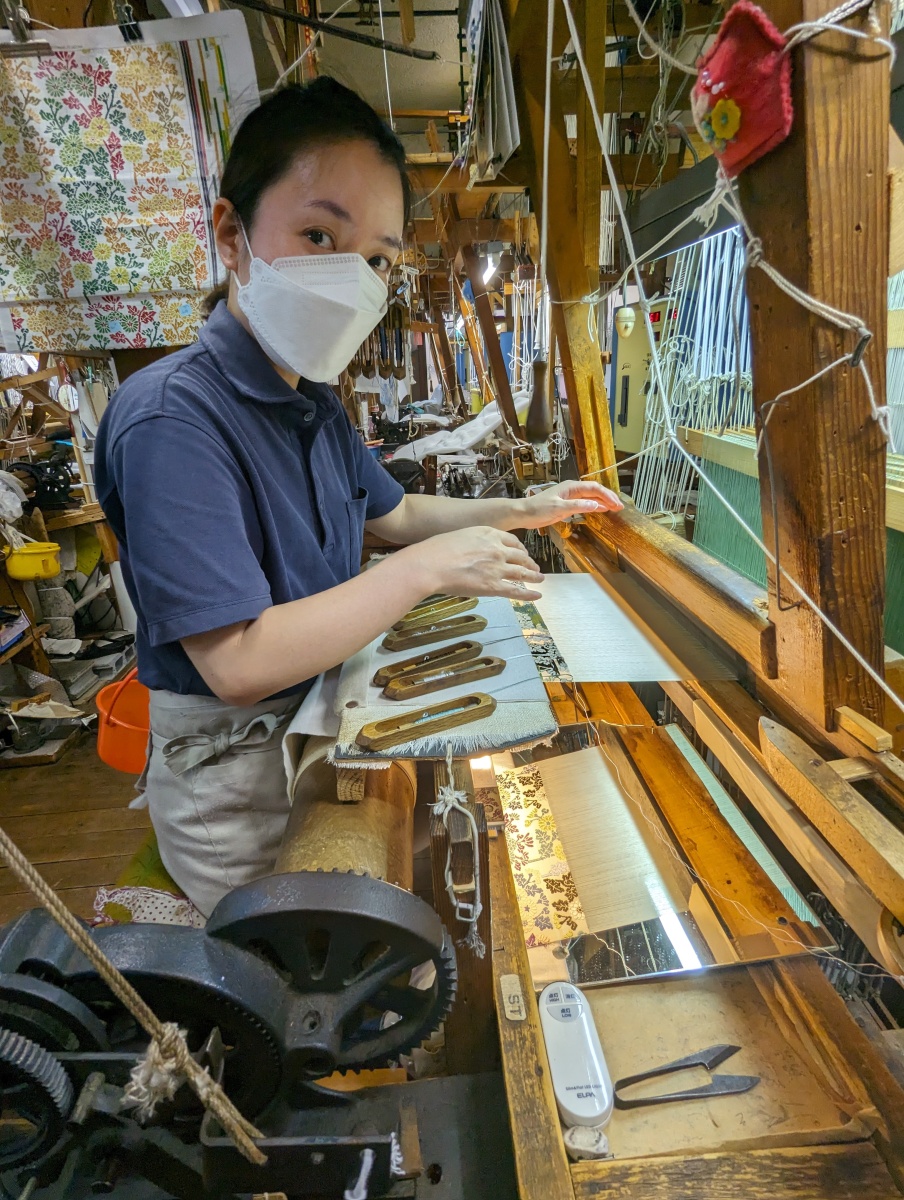
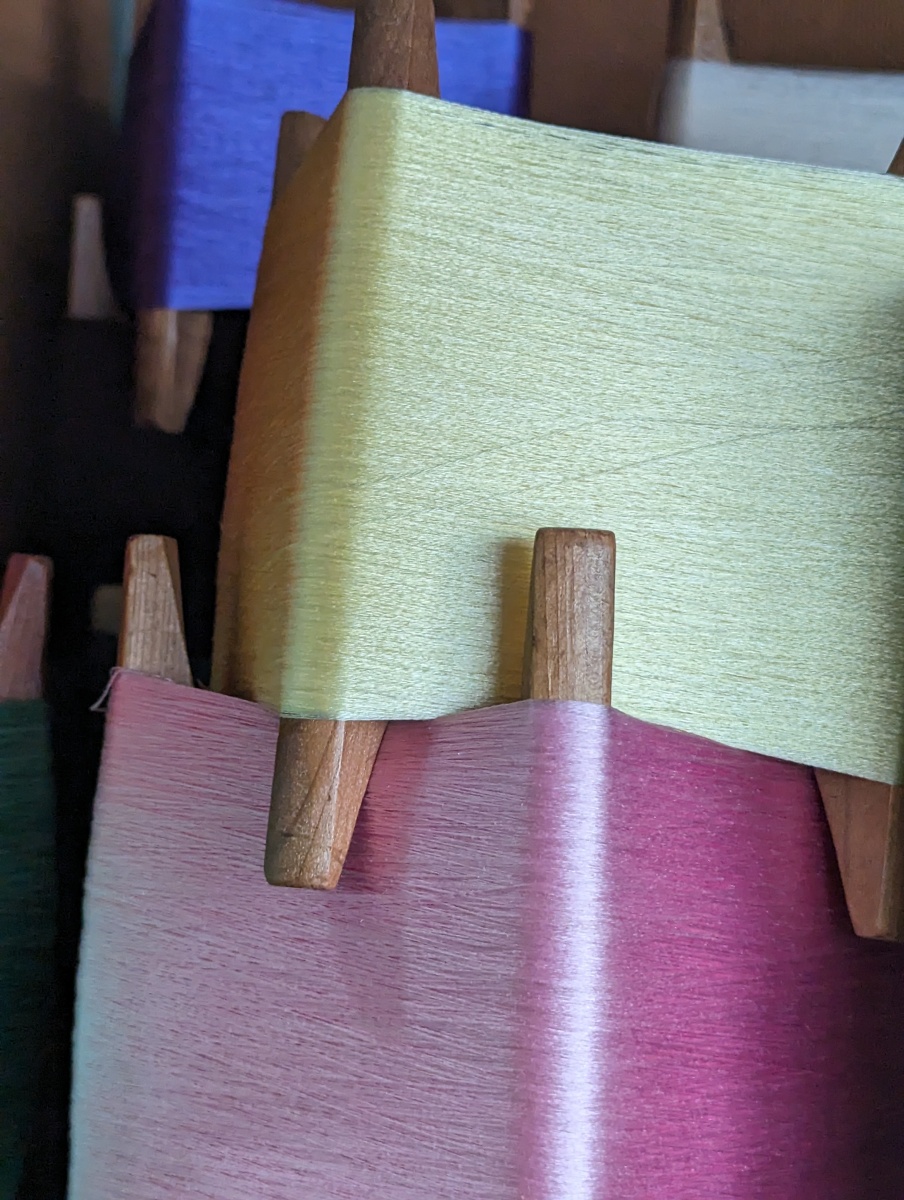

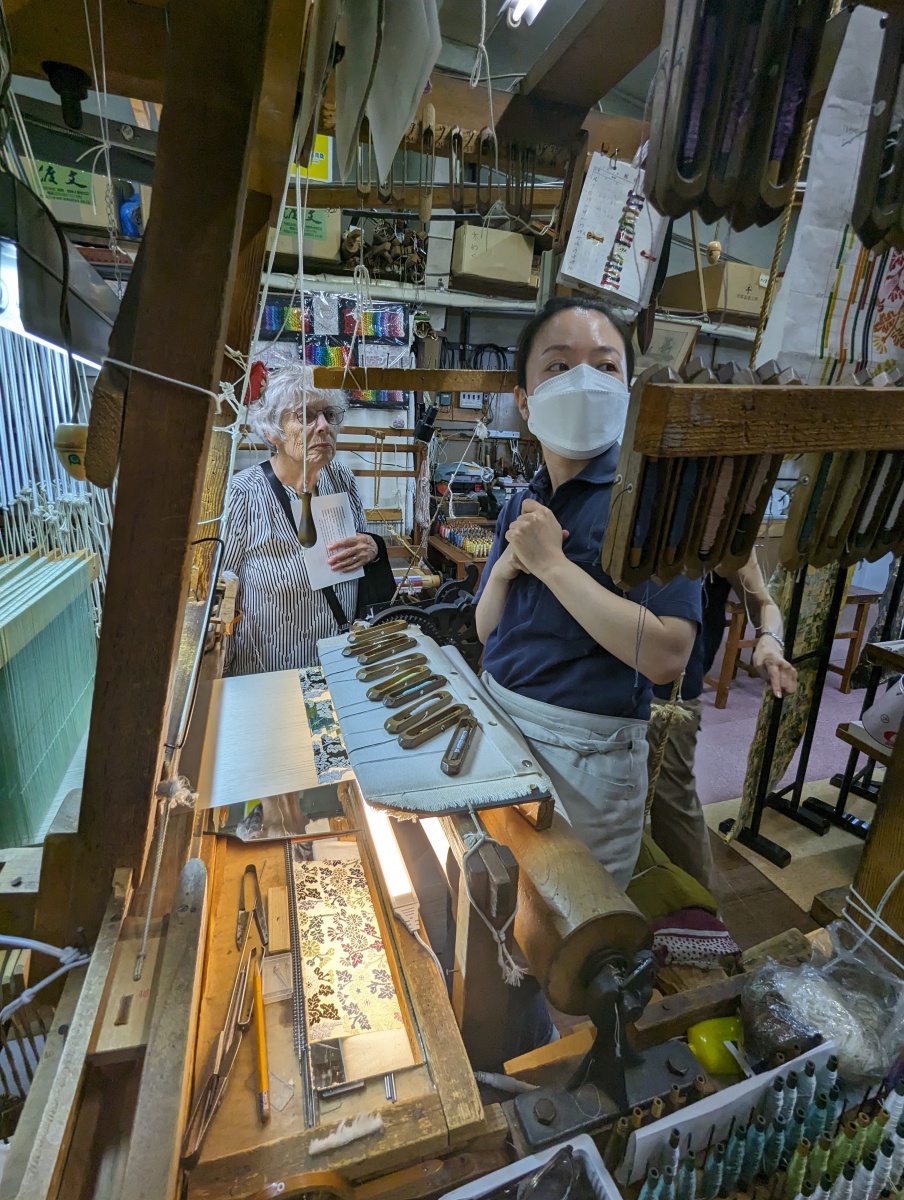
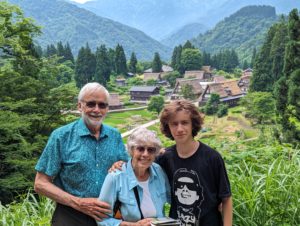

Virginia Garlitz
9 Jul 2023WOW ! SUCH WONDERFUL PHOTOS-ESPECIALLY LOVED Tenn’s flaming cap
Eric Adelberger
9 Jul 2023what a wonderful trip to old and new Japan-bullet trains and 1000 year old cultural traditions still practiced today! It is great how your trips with grand kids are adapted to each child’s individual personality. You didn’t mention the heat and humidity which always struck me in summertime Japan and how the Japanese always seemed so cool and at ease in it..
Laura
9 Jul 2023I LOVE the jam session and drum teacher vids. So many amazing photos and excellent descriptions. Can’t wait for the next installment!
Barbara Whitten
9 Jul 2023Your photos, as always, are wonderful, and gave us an idea of how beautiful Japan is. I especially enjoyed the video of the loom. Thank you for sharing this experience.
Heidi
9 Jul 2023Phew!! I’m tired just reading about all the things you did! Phenomenal trip, guys, well done. What an amazing gift you gave to Tenn.
The book Hiroshima was assigned reading in my 8th-grade class. I remember it vividly to this day. Horrific. May such a thing never be repeated in human history.
Barbara Ro
9 Jul 2023A lovely trip, great experience. So much to do, to wonder about. …. Barbara
Beth & Bob Carlson
16 Jul 2023Your in depth experiences into Japanese culture were amazing. Beth Great that you got to go out around and hike in such a beautiful area!!! Bob